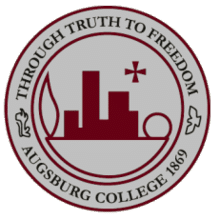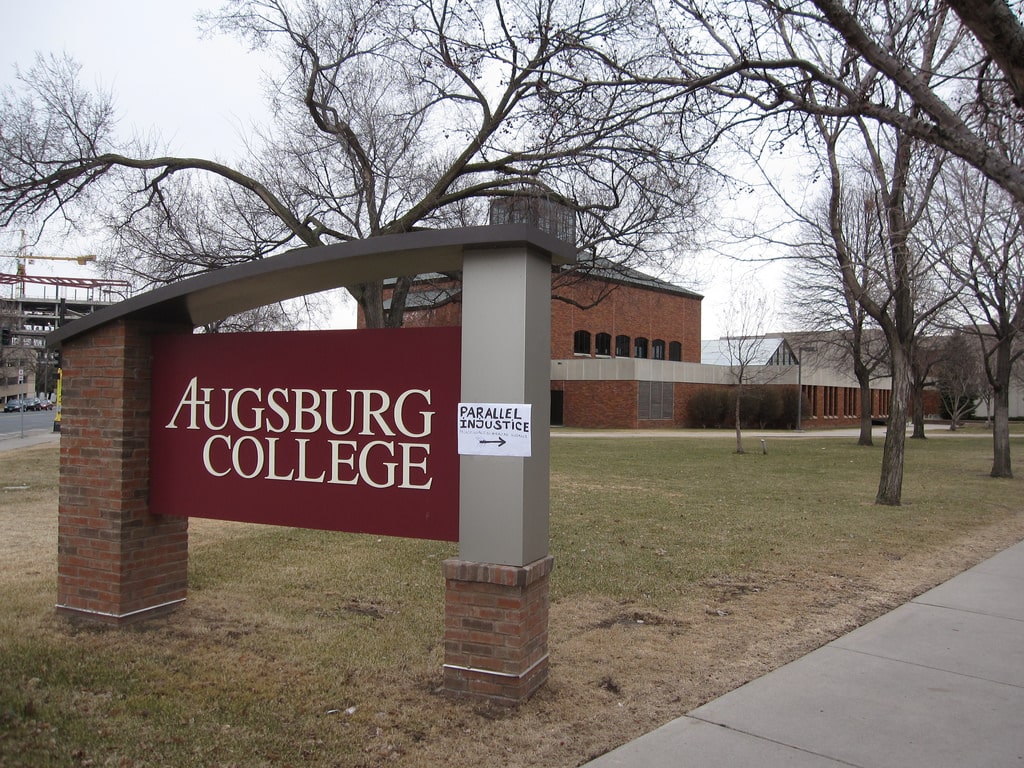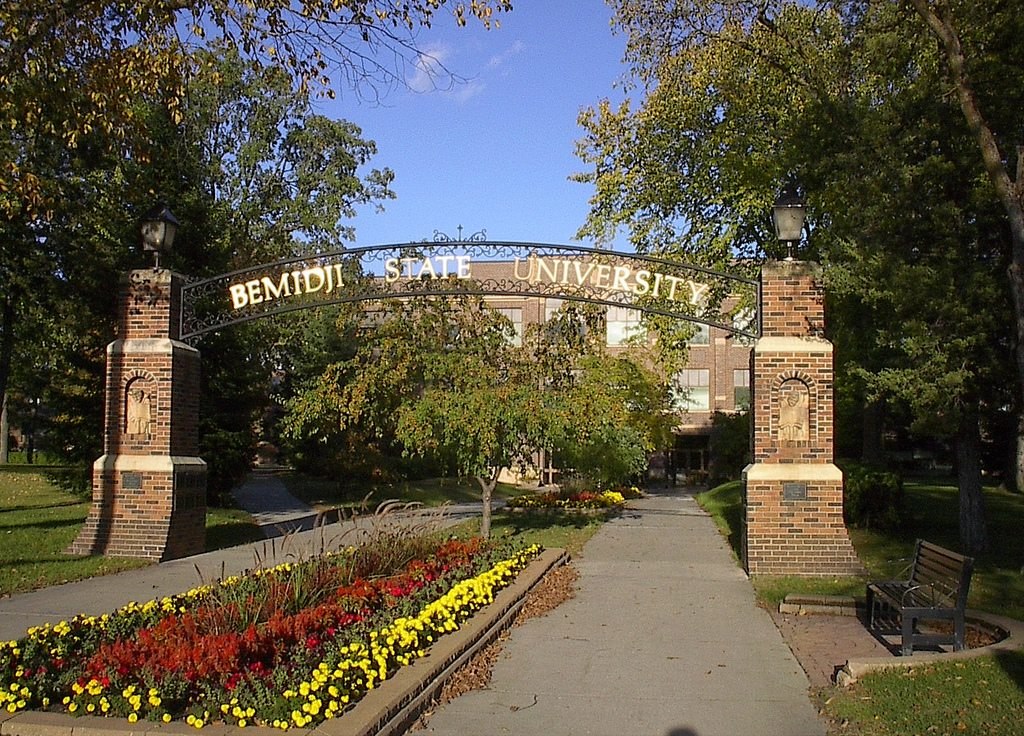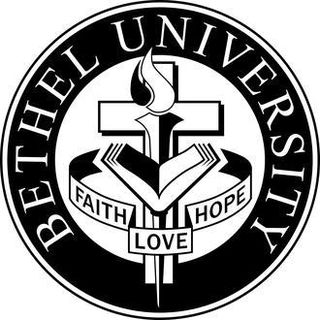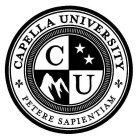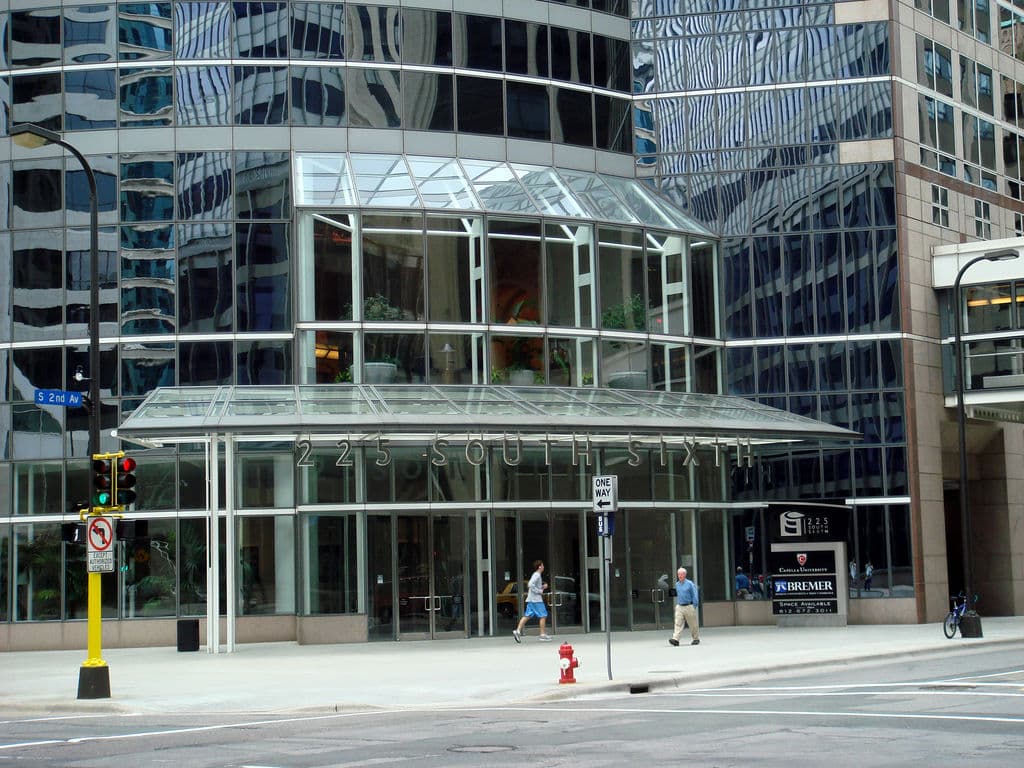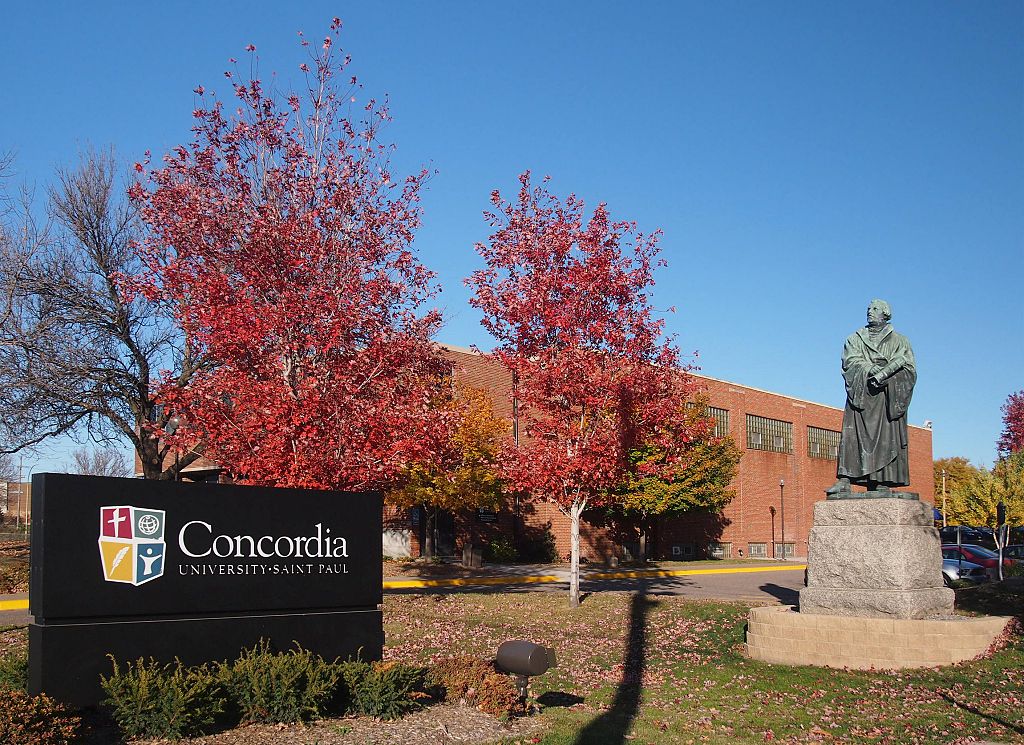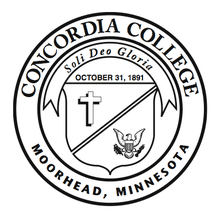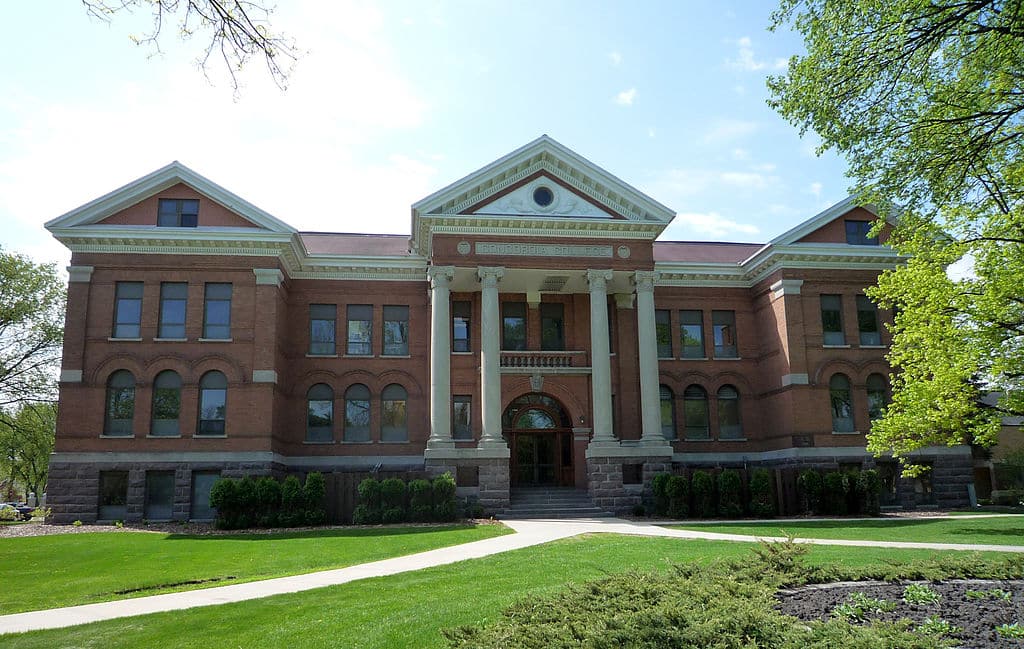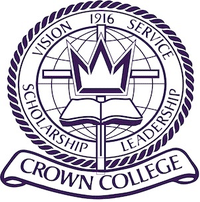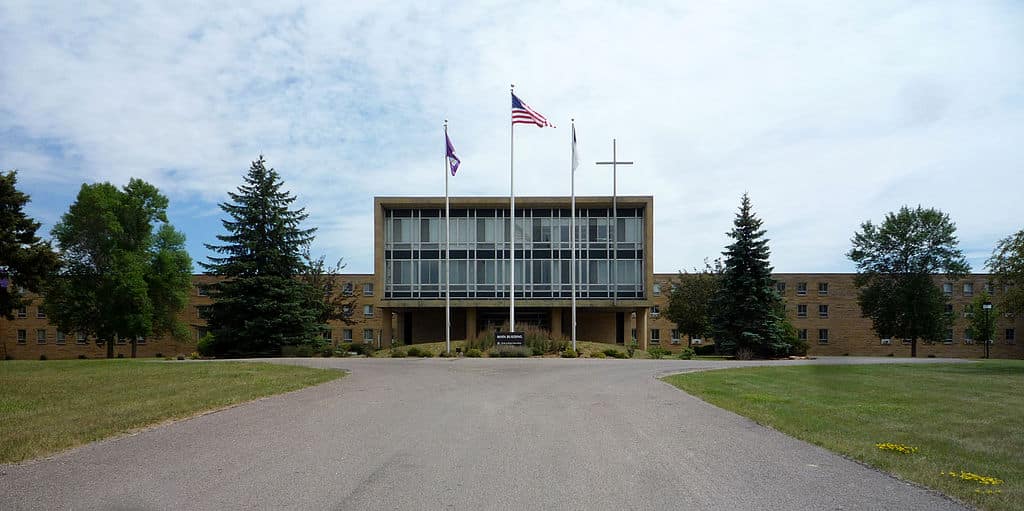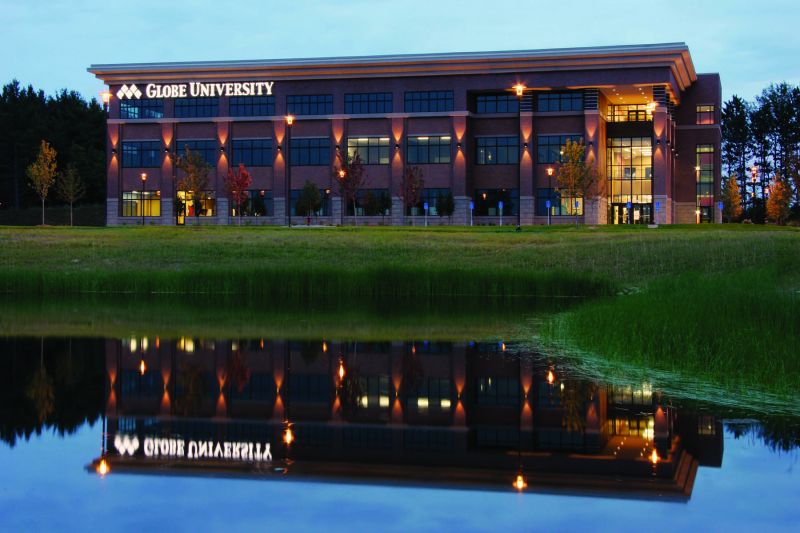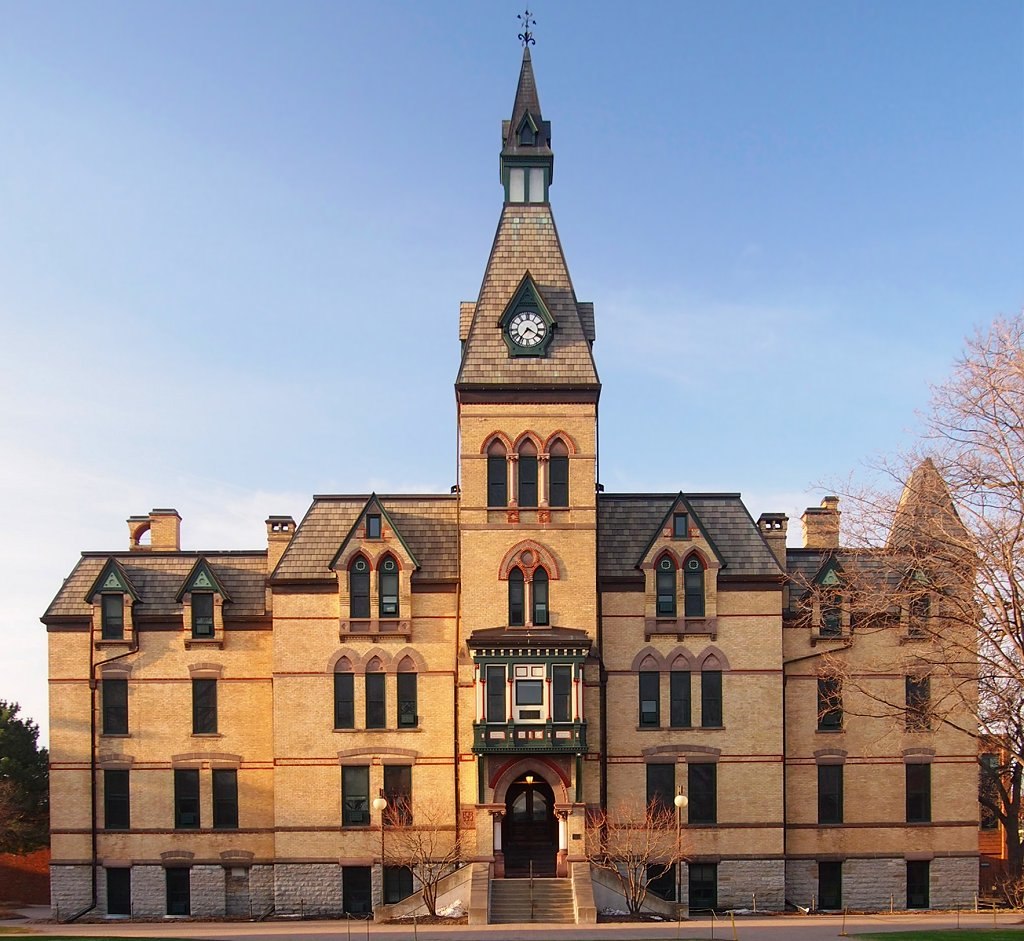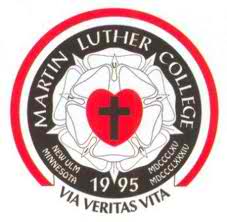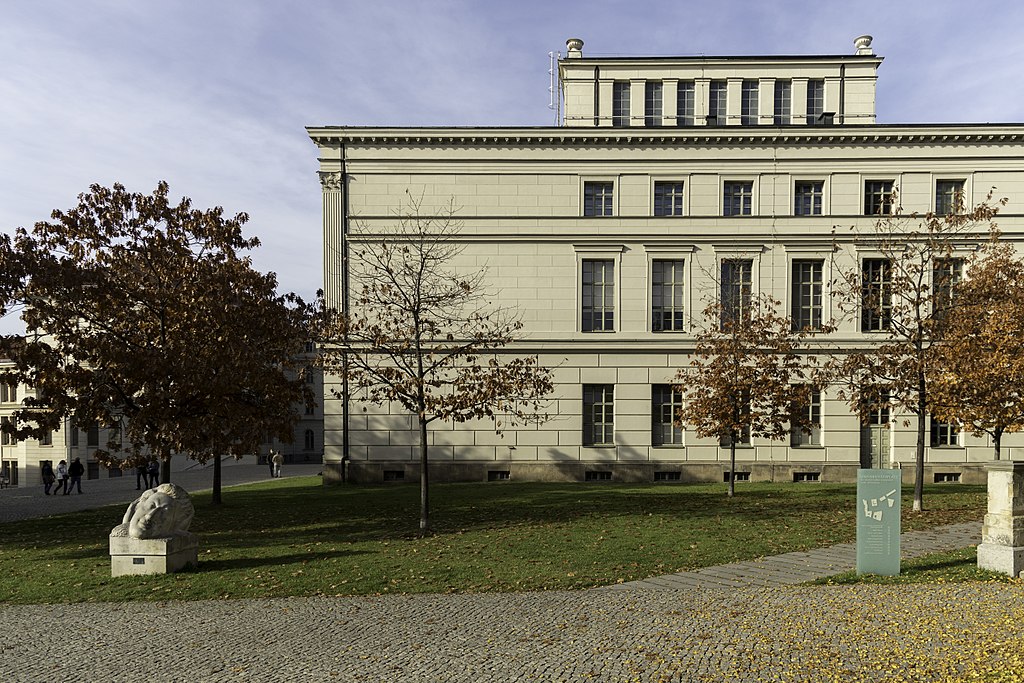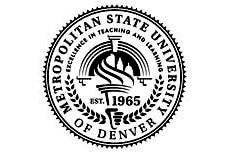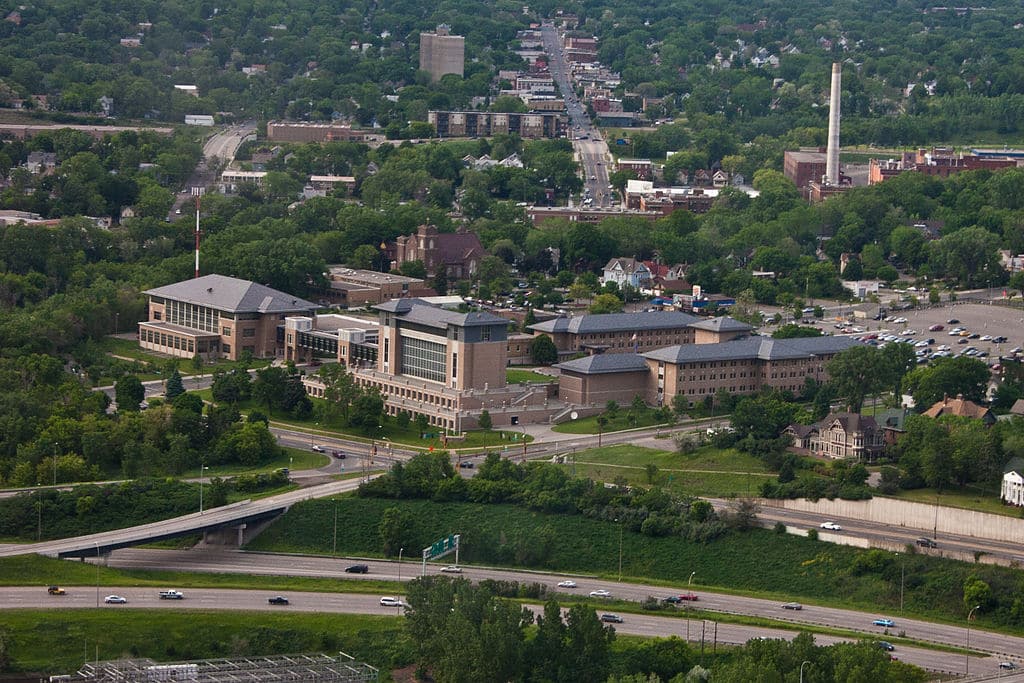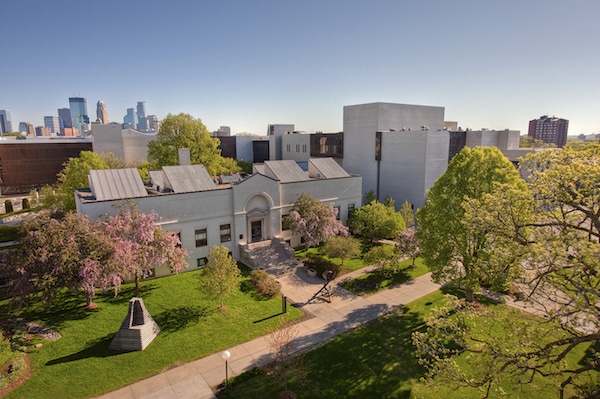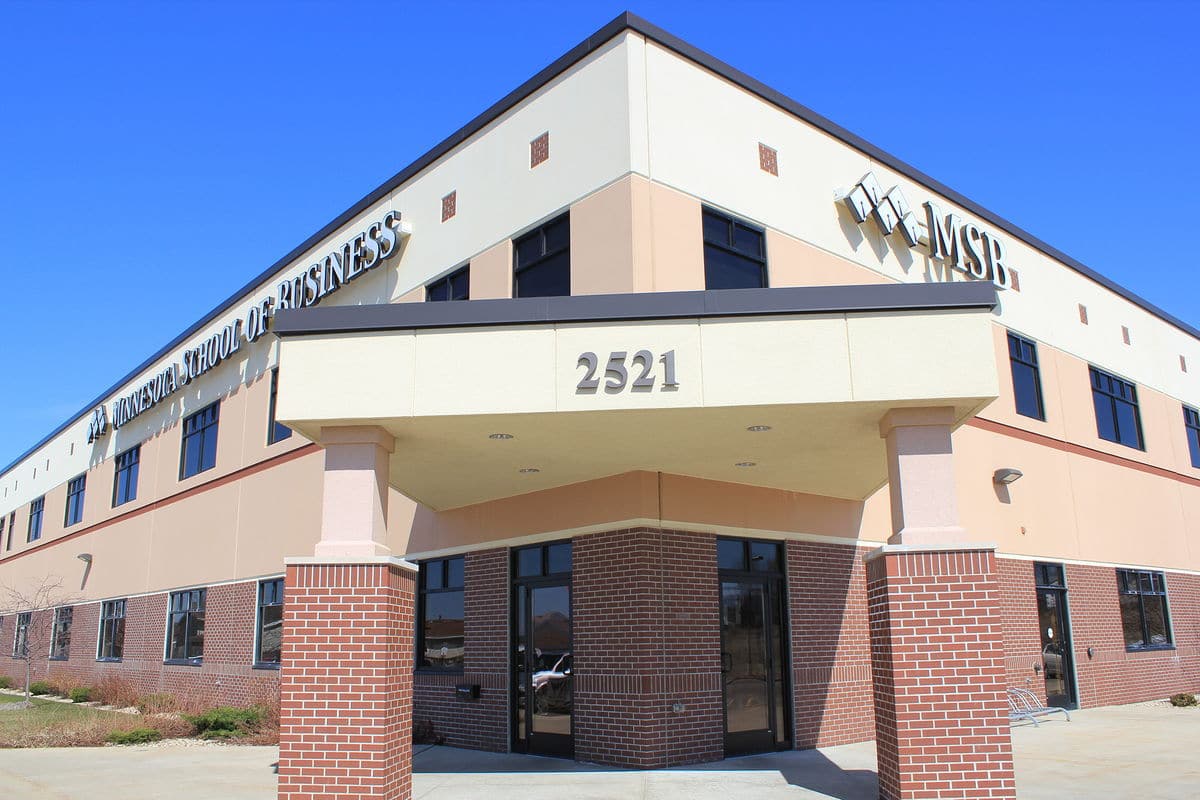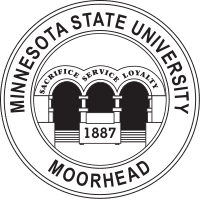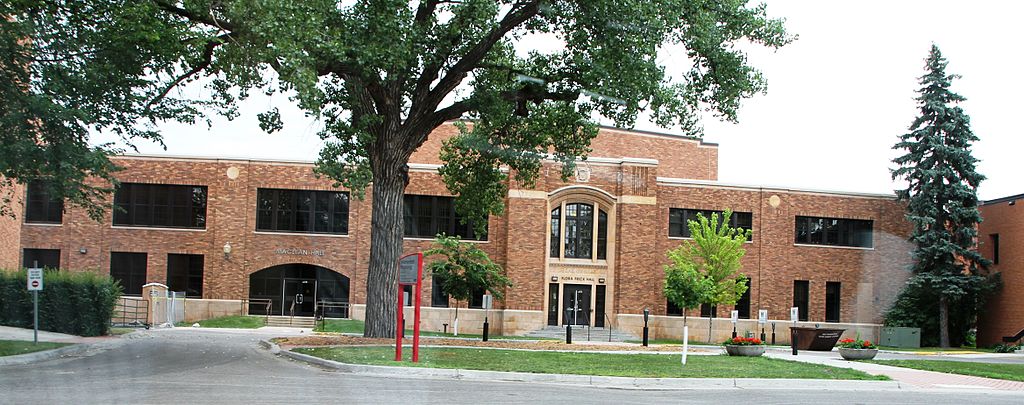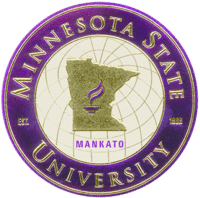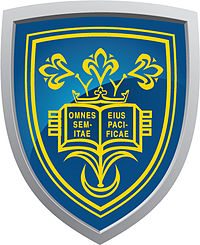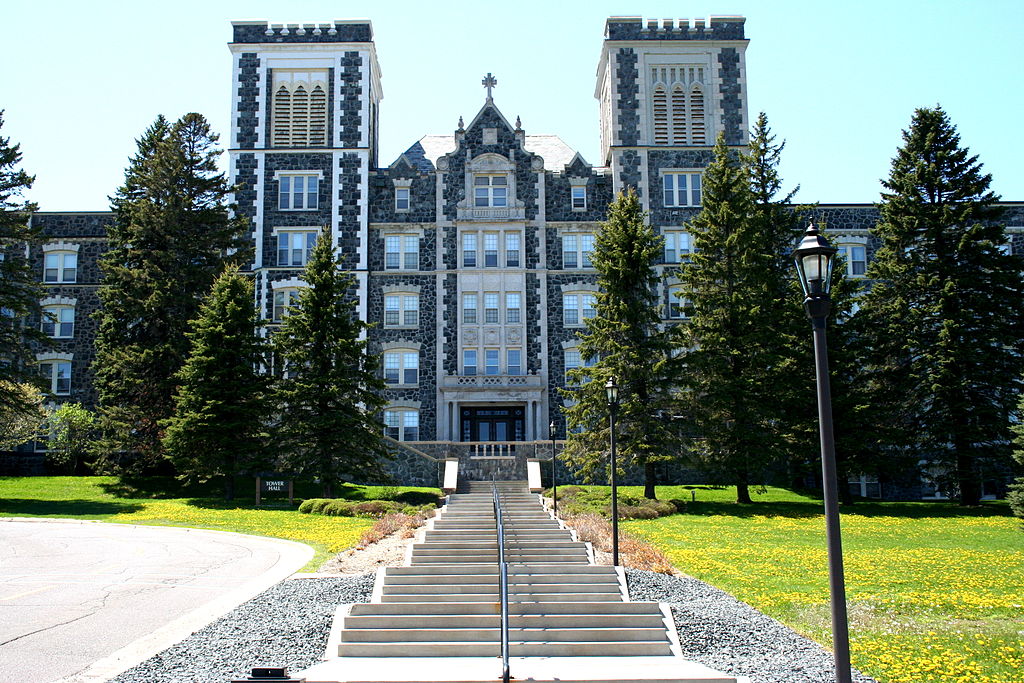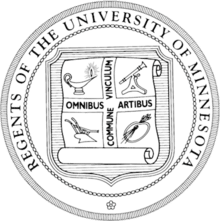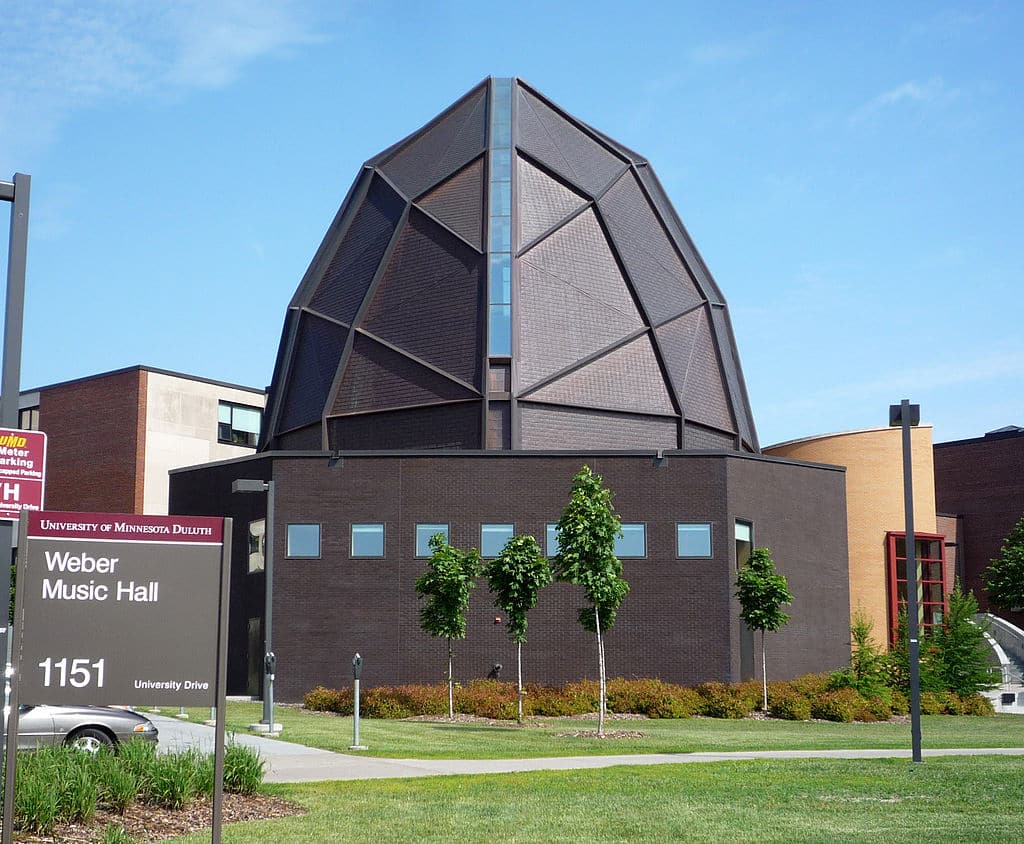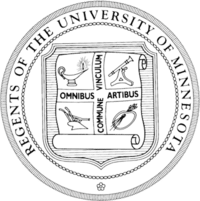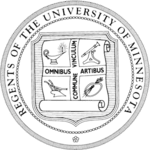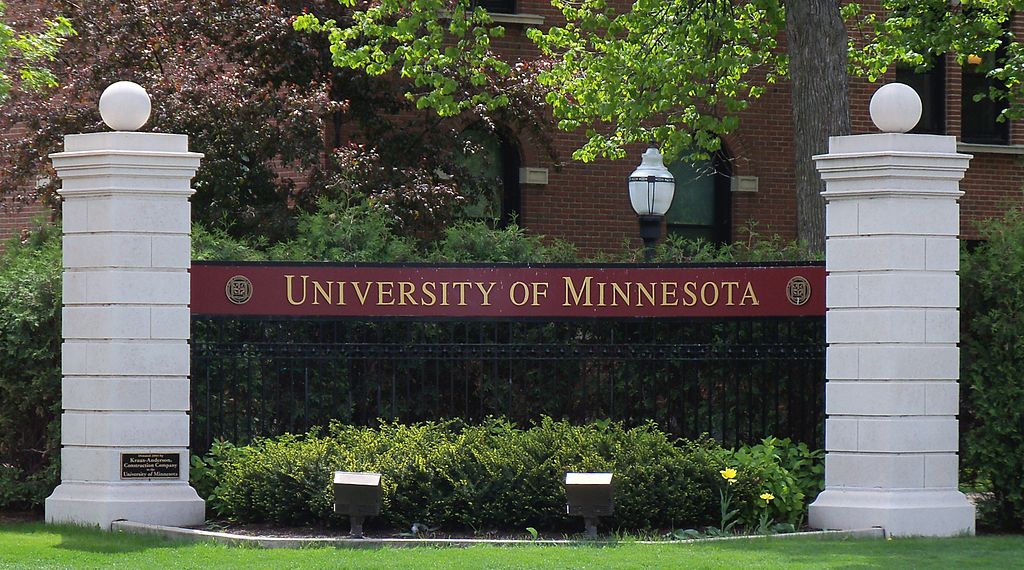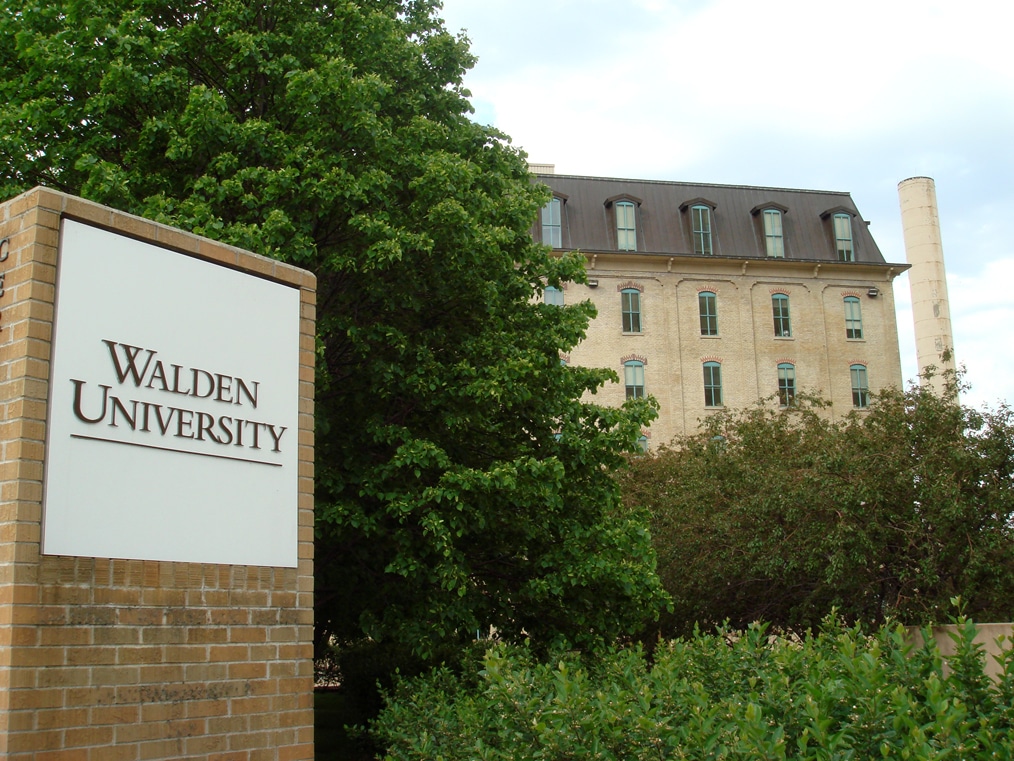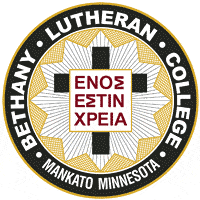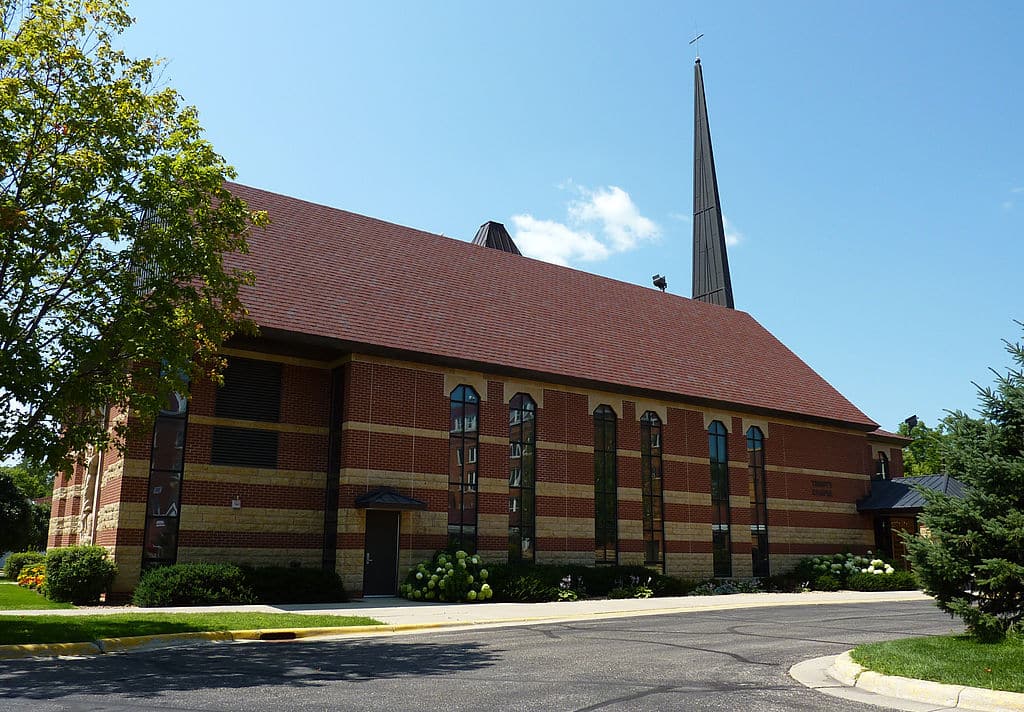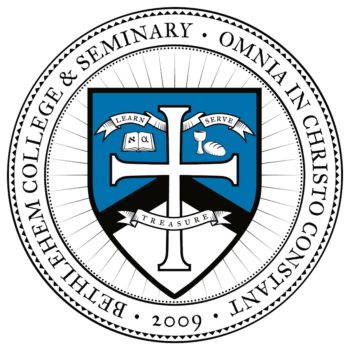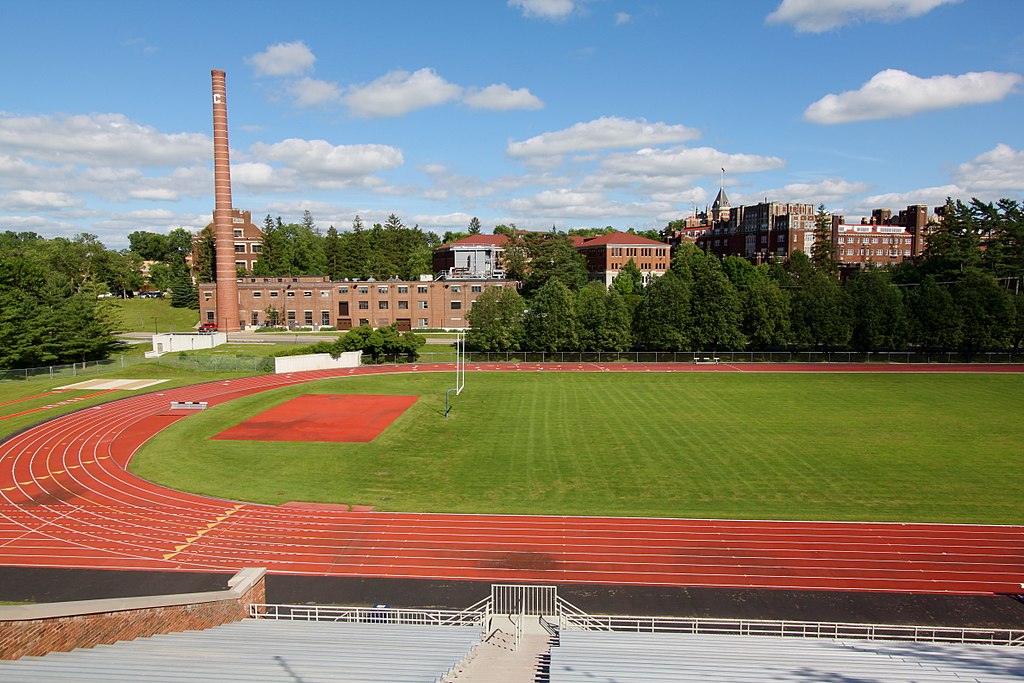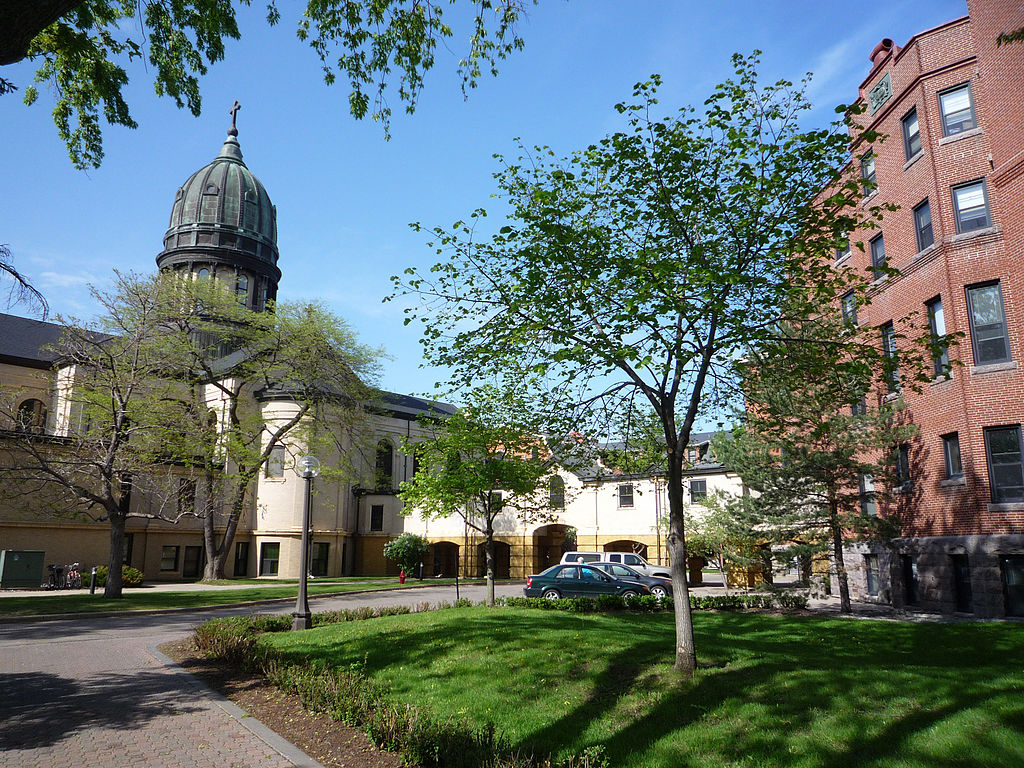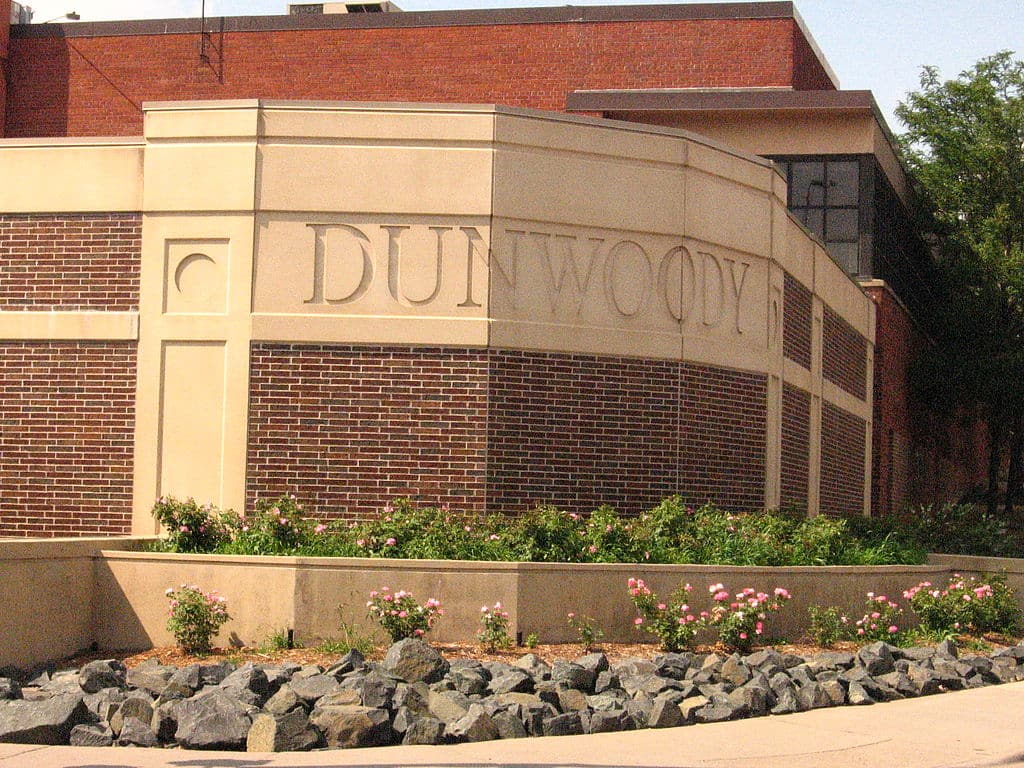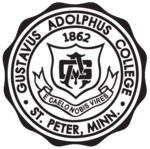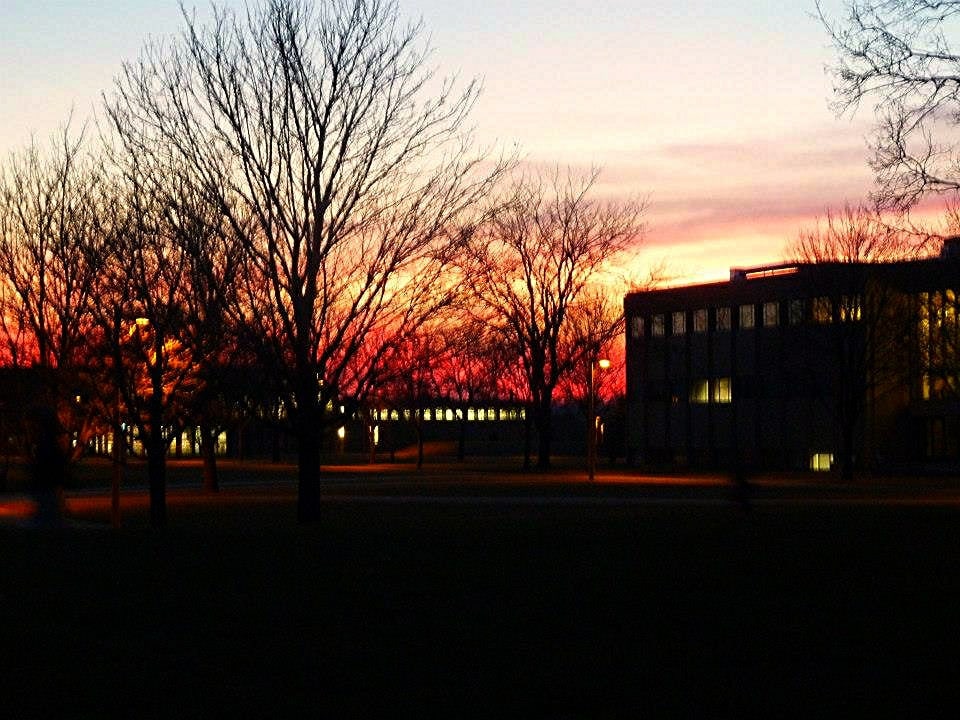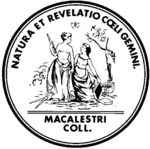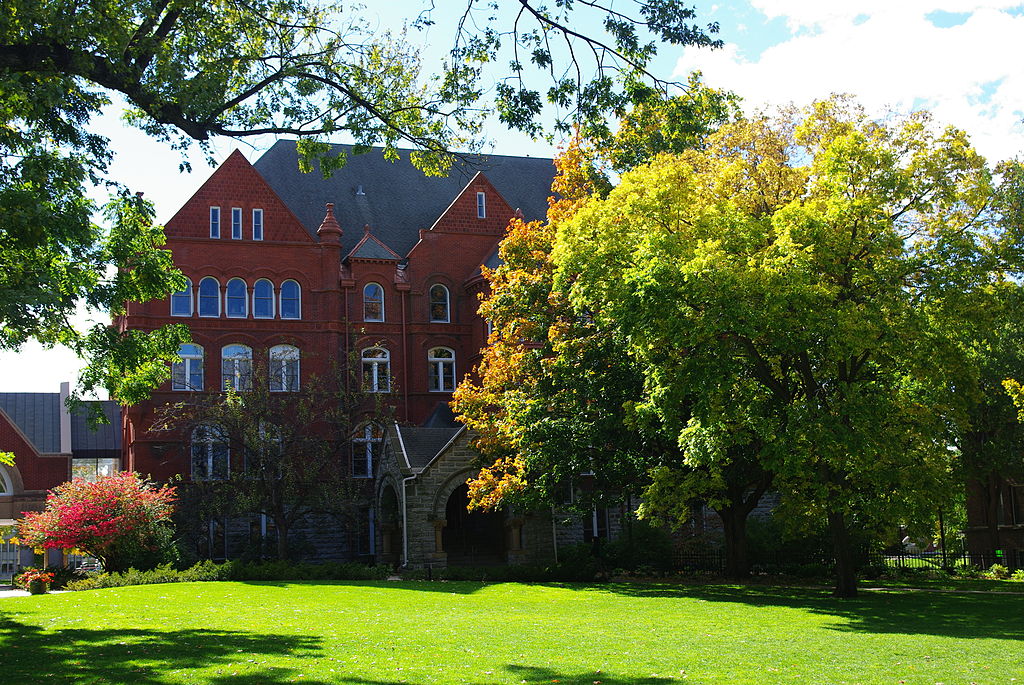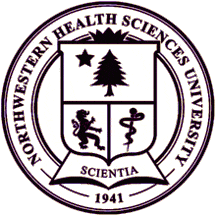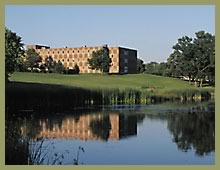Online Colleges in Minnesota
Compare all of the best distance education colleges located in Minnesota to pursue an online bachelors degree, associates, or online masters program degree. Including cost of tuition, degrees they offer, enrollment rates, faculty, famous alumni, and more.
Recommended Schools
-
Academy College
Bloomington, Minnesota
- 124 Total Students
- 8 to 1 Student to Faculty Ratio
- Yes Online Programs
When in 1936 it opened its doors for students, it began as ‘Academy of Accountancy’, with Accountancy being its sole focus of education. However, the institute realized the growing needs of its community and students regarding technological advancements and soon incorporated it within its programs and academics. It was then the college introduced Computer Technology programs. This reflects the institute’s commitment towards understanding community needs and contributing towards its life time career development of its students.
Based in Bloomington, Minnesota, Academy College is a private institute with the smallest number of student population. This, the academy believes in line with its small yet interactive and personal classroom experience.
Academy College offers 16 undergraduate programs. It offers Bachelors and Associate degrees along with Certifications in three major areas; Business, Computer Technology and Aviation. Program in Aviation was introduced followed by a need for Aviation education in the area, in partnership with the leading aviation training institute, Thunderbird Aviation. Also, the academy, to this day continues its program in Accounting.
Understanding the difficulty students face in meeting their financial needs, the Academy College provides Scholarships such as Academy College Scholarships, Sherm Booen Legacy Scholarship and Alliance Program Scholarship. There is also Tuition Free Courses as well as Financial Assistance to help students during their study period.
Academy College School Facts
- LocationMinnesota
- Religious AffiliationNot applicable
-
Augsburg College
Minneapolis, Minnesota
- 3,458 Total Students
- 59% Acceptance Rate
- 28% Enrollment Rate
- 12 to 1 Student to Faculty Ratio
- 2,925 Total Applicants
- Yes Online Programs
Augsburg began its journey to serve people for their educational and spiritual needs as a seminary. It was founded by Norwegian Lutherans in America, in 1869 in Marshall, Wisconsin. It was the first institute that they had founded and soon it was relocated to Minneapolis, Minnesota where it is presently located. Within some years, the college added undergraduate program offerings and so began its journey as a higher education institute. By 1963, the seminary was detached from the institute and merged with Luther Theological Seminary; however the values of service and commitment still remain.
Focused on its development as a higher education institute and to advance intellectually, Augsburg College, in 2012 and 2013 has held Nobel Peace Prize Forum at the campus. This gave the students and faculty at the campus, the opportunity to interact and be inspired with the Nobel Peace Prize Laureates.
Campus life at Augsburg is dominated by sports, spirituality arts and student organizations. The students get the opportunity to take part in intramural sports as well as intercollegiate competition. It has athletic teams that participate at the NCAA Division III. To maintain spiritual connection, the campus has its own ministry which conducts Chapel services, interfaith discussions and highlighting community and global issues such as justice and hunger. There are opportunities in arts, film, music and theater for students who wish to have an outlet for creative expression. And finally, to address various student concerns and to bring them together, the college has 50 student clubs and organizations. The campus colors are Red and Gray.
As part of its academic offerings, the college serves both traditional as well as non-traditional students. There are undergraduate degree programs, adult undergraduate degree programs and graduate degree programs. There are over 50 different programs to choose from. There is also a postgraduate program; Doctor of Nursing Practice. The campus has distinctive facilities which include Martin Luther Residence Hall, James G. Lindell Library and also its Old Main, its oldest building, also listed with the National Register of Historic Places.
Augsburg School Facts
- Years Estd.1869
- NicknameAuggies
- MascotEagle
- MottoEducation for Service
- ColorsMaroon and Gray
- LocationMinnesota
- AthleticsNCAA Division III MIAC
- Religious AffiliationEvangelical Lutheran Church
Famous Augsburg Alumni
-
Roger Huerta
Professional Sports
A former wrestler; also a mixed martial artist. He is also known for competing in the Ultimate Fighting Championship.
-
Jill Billings
Politics & Law
A Democratic member of the Wisconsin State Assembly
-
Rev. Mark Hanson
Social Advocacy & Service
Bishop of the Evangelical Lutheran Church in America
-
Peter Agre
Science & Medicine
A Nobel Prize winner, 2003 in Chemistry; also a faculty member at the Johns Hopkins University School of Medicine
-
Martin Sabo
Politics & Law
Formerly served as U.S. Representative
-
Anne Panning
Entertainment & Arts
A writer and is known for winning 2006 Flannery O'Connor Award for Super America
-
James Pederson
He played in the National Football League
-
Bemidji State University
Bemidji, Minnesota
- 5,081 Total Students
- 94% Acceptance Rate
- 31% Enrollment Rate
- 21 to 1 Student to Faculty Ratio
- 2,566 Total Applicants
- Yes Online Programs
BSU had its humble beginnings in 1919 as Bemidji Normal School. At that time there was a growing need for school teachers better trained in their fields. In response to this, Minnesota State Legislature chartered the school and it began its operations with only 38 student in its first class. Continuing with the tradition of adapting to the growing needs, the college expanded its academic offerings to include other disciplines and 1975 was made into a college.
Located in Bemidji, Minnesota, Bemidji State University is a member of the Minnesota State Colleges and Universities system. As a public state university, the university upholds its responsibility of providing education that develops its students into individuals more responsive to their communities needs.
At BSJ, the students are provided with an experience that is a perfect balance of education, extracurricular activities and building connections. Through its wide range of clubs, which include religious, social as well as governmental, the university has everything for every student. There are special events that are unique to the university such as B.O.B – Beaver Organization Bash where students are chosen and assorted into different groups based on their interests; there is ‘Jump In The Lake’ in which victory in any game is celebrated by jumping in the lake and lastly, ‘United Nations’ which celebrates the different cultural present at the campus. BSJ also has its art exhibits as well as theatre performances. There are also opportunities for sports and recreation; while there are teams participating at NCAA Division I. Other recreation includes lake, camping, mountain bikes and others. The campus colors are Green and White and the mascot is Bucky the Beaver.
The academic offering at the university includes a range of options; there are 65 undergraduate majors (including pre professional), and 14 graduate programs. BSJ also offers some unique programs – Aquatic Biology, Creative and Electronic Writing, Indian Studies, Exhibit Design and a few others.
BSU School Facts
- Years Estd.1919
- NicknameBeavers
- MascotBucky the Beaver
- ColorsGreen and white
- LocationMinnesota
- Religious AffiliationNot applicable
Famous BSU Alumni
-
Michele Leonhart
Science & Medicine
Administrator at the Drug Enforcement Administration
-
Trent Baalke
Professional Sports
General manager with San Francisco 49ers
-
Lem Burnham
Professional Sports
American football player
-
Matt Climie
Professional Sports
NHL goalie
-
Brian Leonhardt
Professional Sports
NFL tight end
-
Bethany Global University
Bloomington, Minnesota
- 179 Total Students
- 65% Acceptance Rate
- 82% Enrollment Rate
- 19 to 1 Student to Faculty Ratio
- 93 Total Applicants
- Yes Online Programs
BGU is a Private Christian college that began in 1948 by five of the families that had been member with what is now known as the Bethany Church. It was the passion and the commitment that each of these families had to work for the mission of Jesus. To move forward with their purpose, the families sold off their homes, raising funds for establishing the Bethany Fellowship which further led to establishing Bethany College of Missions in 1948.
Based in Bloomington, Minnesota, Bethany Global University was named ‘Bethany’ after the place that Jesus had preferred when needed to reflect. Rather than taking a passive approach to Christian teachings, the university has been actively involved in activities globally such as sending missionaries and setting up churches and missionary training centres in about 40 countries.
Campus life at BGU is focused on purposeful development of its students. It is a mix of personal development, social interaction and community engagement. The spiritual life is encourages through worships and chapel. The campus offers discipleship and prayer ministry appointments for students looking for advisors and mentors. There is also Furnace Prayer Room where students join each other in praying. For community development, the university brings LEAD Interns to the campus, where college going students practice and study their faith while living at campus. It also engages them in teaching students with disabilities through its Beyond Limits program. There are also events aimed at bringing students closer; there are men and women’s retreats where students are sent off campus to engage in worship but also enjoy games and recreational opportunities. There are other events such as The Forge or The Furnace which take place simultaneously each year and are held for enjoyment as well as strengthening faith. There is also a 3 day camping event. The campus colours are Blue and White.
BGU offers both undergraduate (Certificates, Associates and Bachelor’s degree program) and graduate (Master’s) programs in theology, biblical studies, intercultural studies and others. Its prominent facilities are Finsaas Hall and Bergh Hall.
BGU School Facts
- Years Estd.1948
- MottoLiving with eternity in view
- ColorsBlue and White
- LocationMinnesota
- Religious AffiliationInterdenominational
-
Bethel University
Saint Paul, Minnesota
- 3,952 Total Students
- 95% Acceptance Rate
- 42% Enrollment Rate
- 12 to 1 Student to Faculty Ratio
- 1,531 Total Applicants
- Yes Online Programs
Roots of Bethel go back to founding of Baptist Union Theological Seminary in 1871. It was founded by John Alexis Edgren who was a scholar and a sea captain and wanted an institute to train pastors. The sole purpose was to cater the Swedish Baptist immigrants, which were coming from Europe. The seminary continued to serve people successfully and was merged with another Christian institute. It also expanded its curriculum over the years and gradually transitioned as a university by 2004.
Today, Bethel University is a Private evangelical Christian higher education institute which is based in St. Paul, Minnesota. It has another campus based in San Diego. Besides its academic development, the college has also infused the values of inclusivity, openness and working towards a common goal of becoming world leaders.
Life at Bethel is very closely connected with God and Christian ideals. Students are given an environment which should discipline them, and bring to their attention the real world problems. Each student at the campus has to abide by the ‘Covenant for Life Together’ which emphasizes on maintaining morality. Extending education and participation beyond classrooms, there are extracurricular activities that students take part in. It inducts two community engagement programs; Act Six and Frogtown. The former provides scholarships to students belonging to underrepresented communities and the latter brings educational opportunities for students to participate in literacy tutoring. Campus life for its new students begins through Peer Empowerment Orientation (P.E.P), which begins before classes and is aimed at preparing new students for the life ahead. Besides, athletics form an important part. Its teams, ‘The Royals’ participate at the NCAA Division III sporting campus colours Navy Blue and Vegas Gold.
Bethel’s academic programs consist of more than 100 undergraduate (Certificate, Associate and Bachelors) and graduate program, divided over four schools and colleges. It offers 88 majors and 43 minors, 11 pre professional programs. Its prominent buildings are Hargis Park, Robertson Center Gymnasium and a few others.
Bethel School Facts
- Years Estd.1871
- NicknameRoyals
- MascotRoy the Lion
- ColorsNavy blue and Vegas Gold
- LocationMinnesota
- AthleticsNCAA Division III MIAC
- Religious AffiliationBaptist
Famous Bethel Alumni
-
Chad Anderson
Politics & Law
Republican member of the Minnesota House of Representatives
-
Joel Hodgson
Entertainment & Arts
Creator of, also playing the main character in Mystery Science Theatre 3000
-
Ron Tschetter
Politics & Law
Director of the Peace Corps
-
Dawson McAllister
Entertainment & Arts
Host of Dawson McAllister Live, talk-radio show
-
Peter Ludlow
Education & Advocacy
Professor of philosophy at the Northwestern University
-
Dr. Gary Smalley
Education & Advocacy
A prominent author, family counselor and also a motivational speaker
-
Harvey L. Wollman
Politics & Law
Formerly served as the Governor of South Dakota
-
Recommended Schools
-
Capella University
Minneapolis, Minnesota
- 34,365 Total Students
- 20 to 1 Student to Faculty Ratio
- Yes Online Programs
A Private, for profit higher learning institute that started in 1993, Capella was founded by Dr. Harold Abel and Stephen Shank as The Graduate School of America. Shank was the CCEO of CEO of Tonka and Abel had served formerly as the presidents of various higher education institutes. The two, with their individual experiences, came together to serve the needs of the community for higher education. It received its regional accreditation in 1997 and given its present name in 1999.
The university is owned by Capella Education Company, which is a publicly traded company. It is based in Minneapolis, Minnesota. At present it has been accredited by Higher Learning Commission. Capella University positions itself as an institute that serves the relevant skill development and knowledge acquisition needed for practical application on jobs and focused on career development.
Capella serves the online education industry and so aims to be affordable, providing flexible education as well as student outreach. At the beginning of the journey, there is student Support Team which not only guides through best program choices but also helps with financial matters. The instructions are offered through two different formats; there is FlexPath where the individual students sets its own work pace and picks its own routine, and there is GuidedPath where students take the courses as designed for their schedule. Former is more individualised and the latter more interactive. Not only its format, but also its curriculum is designed keeping in mind professional need and practical application of the skills. The students are provided with information regarding their progress, their course completion, their assignment deadlines and other information. The university also offers free course trials.
The academic programs offered at Capella consist of 53 degree programs and more than 150 specializations to choose from, under 11 academic disciplines. It also offers 51 certificate programs and 10 Doctoral degrees.
Capella School Facts
- Years Estd.1993
- ColorsPurple and old gold
- LocationMinnesota
- Religious AffiliationNot applicable
Famous Capella Alumni
-
Curtis J. Crawford
Science & Medicine
American computer systems engineer
-
Irene Muloni
Politics & Law
Minister for Energy and Minerals in the Ugandan Cabinet
-
Brandt Smith
Politics & Law
Member of the Arkansas House of Representatives from Jonesboro, Arkansas
-
Betty Schueler
Education & Advocacy
American author and also works as a computer consultant
-
Tammy Duckworth
Politics & Law
United States Senator from the state of Illinois
-
Christopher Erhardt
Entertainment & Arts
American video game designer and retired professor
-
Concordia University-Saint Paul
Saint Paul, Minnesota
- 4,380 Total Students
- 55% Acceptance Rate
- 28% Enrollment Rate
- 16 to 1 Student to Faculty Ratio
- 1,483 Total Applicants
- Yes Online Programs
Concordia is a private liberal arts university that began its journey in 1893 as an institute providing educational opportunities in a Christian centered environment preparing students for ministerial positions in the Lutheran Church-Missouri Synod. It gradually expanded its academic base and in 1921 was accredited as a two year college and after a long time, by 1962 added four year college degrees.
In 1997 the college transitioned into a university, becoming Concordia University, St. Paul. The university is based in Saint Paul, Minnesota and is part of the Concordia University System. It aims to invest in the individuals seeking knowledge and success by developing them personally as well as professionally.
The campus life offered at Concordia is such that encourages each student to be involved. Students find plenty of opportunities and activities such as student clubs and organisations. There are more than 40 present on campus ranging from performing arts, religion, honor society, language and many more. Students also find creative outlet through Fine arts where they get a chance to display their talent through gallery exhibits, theatre productions and musical performances. Being a Christian affiliated institute, spirituality and religion form a major part of student life. The campus ministry provides activities where students can worship and reflect individually as well as in groups. It also holds faith based musical theatre. It also provides opportunities where students get to engage with the community; students get to work in the church and also take part in community outreach program interacting with different cultures. Community Action, Leadership, and Learning (CALL) Center is a community service programs where students engage in raising awareness, advocacy, volunteer work, research and other community services. Athletics is also an important part of student life; its teams ‘Golden Bears’ take part in NCAA Division II.
The academic programs offered at Concordia include over 100 undergraduate programs including majors, minors and others, over 20 Masters programs, two Doctoral programs. Its notable facilities are Meyer Hall, Buenger Memorial Library, Walther Hall, Graebner Memorial Chapel, Poehler Administration Building, Buetow Music Center and few more.
Concordia School Facts
- LocationMinnesota
- Religious AffiliationLutheran Church - Missouri Synod
-
Concordia College at Moorhead
Moorhead, Minnesota
- 2,177 Total Students
- 78% Acceptance Rate
- 28% Enrollment Rate
- 11 to 1 Student to Faculty Ratio
- 2,278 Total Applicants
- Yes Online Programs
Concordia is a private liberal arts college that traces its history to the Norwegian settlement in the region. The settlers needed educational opportunities and by 1891 set up a private academy and initially offered education in English literature, natural sciences, mathematics and piano. As more students enrolled and the college progressed, it expanded its academic programs and became a complete liberal arts education.
Concordia College is based in Moorhead in Minnesota, and is associated with the Evangelical Lutheran Church in America (ELCA). Continuing with its original values, the college focuses its resources into developing students for intellectual discovery and knowledge acquisition from a global perspective and for making positive contribution to their communities and the world.
Concordia offers an extensive student life with countless opportunities for student involvement. There are over 100 student group and organisations offering religious, cultural, and literary and many other groups. Music and arts are highly encouraged; there are 19 music ensembles for students to take part in. There is also the annual Concordia Christmas Concert, a 90 year old tradition and also the chance to perform in a country or worldwide tour. It also holds artists series. There are also theatrical productions where the students get a chance to perform. Besides these there are leadership opportunities where students enjoy leading in activities, develop their strength or get a chance to be offered paid internship. The college holds as many as 60 entertainment events throughout the year and has its own unique traditions such as Family Weekend, Thanksgiving Dinner, Move-In Day and others. Spiritual Life is also celebrated through Chapel services and Bible Study groups, community outreach and other activities. The college also has athletic participation; its teams taking part in NCAA Division III. The campus colors are Maroon and Gold and the mascot is Kernel Cobb.
Academic programs offered at Concordia are undergraduate programs with over 50 majors and 12 Pre Professional programs. Its prominent facilities are Parke Student Leadership Center, Jake Christiansen Stadium, Fjelstad Hall, Brown Hall and Grose Hall.
Concordia School Facts
- LocationMinnesota
- Religious AffiliationEvangelical Lutheran Church
Famous Concordia Alumni
-
Alan Bjerga
Social Advocacy & Service
President of the National Press Club
-
Chris Coste
Professional Sports
Former Major league baseball catcher and infielder
-
Coya Knutson
Politics & Law
Former United States congresswoman
-
Adolph Murie
Science & Medicine
Biologist, the first to study wolves in their natural habitat
-
Olaf Storaasli
Science & Medicine
Former NASA scientist
-
Cynthia L. Bauerly
Politics & Law
Member of the Federal Election Commission
-
Leon H. Johnson
Education & Advocacy
President of Montana State University from 1964 to 1969
-
Sidney Rand
Politics & Law
Former United States Ambassador to Norway; and also the President of St. Olaf College
-
Crossroads College
Rochester, Minnesota
- 96 Total Students
- 79% Acceptance Rate
- 74% Enrollment Rate
- 8 to 1 Student to Faculty Ratio
- 34 Total Applicants
- Yes Online Programs
Crossroads was a four year Christian education college that was founded in the year 1913 as International Christian Bible College by the founder David E. Olson in Minneapolis. The college went through many transformations as a Bible institute throughout its time, finally taking shape as university in 1932 but returning to becoming a college in 1942. It also relocated but had moved to its present site in Rochester, Minnesota, in 1971.
It was renamed as Crossroads College in 2002 and by 2016 decided to shut down its operations. While in operation, the college continued its mission of providing Christian centered education through liberal arts programs. The college provided leaders enriched in personal values and committed to Christian lifestyle.
At Crossroads, students are provided with every opportunity, every resource and every facility to enjoy while learning and growing with each other. The campus had student organisations, such as the Student Council responsible for working for the student campus life and organising events; the Crossroads Chorale performing on the nine day mission trip planned throughout the year; the Outreach Teams which are the music and drama groups performing at churches, and service camps; and international mission and service trips through Fellowship or as Ambassadors. On campus spiritual development is ensured through chapel services held where students come to pray and reflect in person and in groups, and/or doing field work and engaging with the community. There is also campus ministry where students find help and assistance when faced with difficulties and trials. The college also had its official mascot called the ‘Knights’.
The academic programs offered at Crossroads consisted of two year and four year degree programs. There was an Associate degree program, and four year programs and six fields of study along with nine minor choices. Its prominent facility is the G.H. Cachiaras Memorial Library.
Crossroads School Facts
- MascotKnights
- LocationMinnesota
- Religious AffiliationChristian Churches and Churches of Christ
-
Crown College
Saint Bonifacius, Minnesota
- 1,153 Total Students
- 53% Acceptance Rate
- 28% Enrollment Rate
- 18 to 1 Student to Faculty Ratio
- 1,052 Total Applicants
- Yes Online Programs
Crown is a Private Christian college that started humbly, in the year 1916, with only four students eager to be learned in Bible. As the classes progressed, it took the shape of a training institute, training students for missionary and ministry work. By 1950s the institute received its accreditation from The Association for Biblical Higher Education (ABHE) and moved several locations before finding its permanent settlement by 1970.
The college also went through many name changes before coming to its present name, Crown College in 1992. Since its beginning the college has had its Christian and Missionary Alliance and is one of the four colleges in the country to be so. It aims at providing knowledge and trainings students to serve in the churches and ministries and assume leadership of their communities.
Based in St. Bonifacius, Minnesota, the campus life at Crown all about making connections, where students get involved in making connections with each other as well as connecting with the spirituality within themselves. Christian values aren’t just limited to education but form part of campus life, as students gather in groups for fellowship, Bible studies, worship nights and other such activities where they discuss and participate in Christian and Biblical dialogue. Spiritual awakening comes with community service as students find opportunities working with local churches and non profit groups such as Feed My Starving Children, participating in activities such as being part of youth groups, making local and international trips and volunteering hours for any other service. For other extracurricular activities, there is Crown College Student Body (CCSB) which works to improve student life on campus. It also supports student clubs of which more than 10 are present including sports, fellowship groups and others. There are college athletic teams, ‘Storm’ which are member at NCAA Division III.
The academic programs at Crown are undergraduate programs with 40 majors, and seven Online Masters degree programs. Its prominent facilities are Miller Hall, Strohm and Richardson Halls, Weldin and Tewinkel Halls and Hardwick Hall.
Crown School Facts
- LocationMinnesota
- Religious AffiliationChrist and Missionary Alliance Church
Famous Crown Alumni
-
Peggy Bennett
Politics & Law
Minnesota state legislator
-
Duluth Business University
Duluth, Minnesota
- 144 Total Students
- 7 to 1 Student to Faculty Ratio
- Yes Online Programs
DBU is a small institute that offers education in the field of business. It traces its beginnings to year 1891 as a school which later transitioned into the institute that it is today. It started as a career training institute that offered business education to those looking to learn business skills, however with time it has expanded into health and other fields of study. It was in 1994 that the university was authorized the power to award degrees by the State of Minnesota
Based in Duluth, Minnesota, by 2003 the university extended into another branch campus, staying in line with its initiative to offering new programs and increasing its outreach. Being focused on career training, the institute has stayed committed to its objective of adding competencies that professionals and students need to build successful careers.
At DBU, students find the advantage of learning with a small student population. With small classroom groups, the students engage and interact with the faculty on one on one basis, and which helps them better with insights and results in healthy exchange of knowledge and information. The university also has the added advantage of being an institute offering fast track programs, which prepare and train you for your desired field and put you on the career track within two or less years. With the studies being easy and enriching, there is also flexible scheduling, making the journey even more easy for its students. Duluth Business University realises that its students may come from different fields of life and to make decision making easy, offers new classes every three months. The students do not lose an entire year as they choose to take time to decide for the classes and carefully plan out their career field. The university is accredited by the Accrediting Council for Independent Colleges and Schools (ACICS).
Academic programs offered at DBU are Associate in Applied Science Degree and two Bachelor of Science degrees.
DBU School Facts
- LocationMinnesota
- Religious AffiliationNot applicable
Famous DBU Alumni
-
William L. McKnight
Business & Industry
Former chairman of 3M corporation
-
Globe University
Woodbury, Minnesota
- 547 Total Students
- 11 to 1 Student to Faculty Ratio
- Yes Online Programs
Globe University is a for-profit private institute focusing on practical education in specialized programs. It was established in 1885 by Frank A. Maron who completed his education in his native country Germany. He aimed at establishing an institute that would provide practical education. The university started initially in Minnesota as a school of business under the name of Globe College focusing on teaching business as it is actually practiced and as theoretical science only. The college was sold in 1972 to Helmer Myhre and Terry Myhre and was given its current name in 2007. Recently, the university faced several legal claims that its advertisements are deceiving and misleading. It also had to pay legal penalty decided by a Minnesota judge of approximately $1 Million for inappropriate termination of the dean Heidi Weber after he uncovered some unethical practices at the university. In 2016, the university stopped the business program at Minnesota State branches.
The university currently has 13 different locations in Minnesota, Wisconsin and South Dakota. It is a member of Globe Education Network including other colleges, universities and training centers as Broadview University and Minnesota School of Cosmotology. Members of the network may share some of their resources or facilities as the library or technical help desk. Credits offered by a member of the network may be accepted by other members according to accreditation and programs requirements.
There are 30 academic program taught at the various campuses of the university. These offer certificates, diplomas, associate, bachelor’s, Master’s and Doctoral degrees. The programs are accredited by ACICS. Some locations offer both morning and evening classes.
Globe School Facts
- LocationMinnesota
- Religious AffiliationNot applicable
-
Hamline University
Saint Paul, Minnesota
- 4,258 Total Students
- 72% Acceptance Rate
- 18% Enrollment Rate
- 13 to 1 Student to Faculty Ratio
- 3,995 Total Applicants
- Yes Online Programs
Hamline University is a private liberal arts higher education institute. It was established in 1854 in Red Wing making it the first higher education institute in Minnesota. It was also famous for being established as a coeducational institute which was very rare at that time. The college was named in honor of Leonidas Lent Hamline who was a bishop of the Methodist Church. Hamline donated $25,000 to support the establishment of the institute. Hamline institute held its first classes in a temporary place in the village general store before moving to Red Wing building when construction was completed in 1857. The first class was graduated in 1859. Number of enrolled students at the college dropped to the quarter by the beginning of the civil war. There was no graduating students in 1862 and the college oldest building was destroyed in 1872 following the shutdown of the college in 1869. It was decided to reopen in another site. It took a while to decide the location of the new site till construction began on its current location in St. Paul campus in 1873 which was only completed in 1880. During the World War I, the college was designated to supply men for ambulance work in France and a unit was established for military training of students which included almost all male students.
Hamline campus is located on a 77-acres piece of land. It contains several distinctive buildings as Drew and Sorin residential halls, Bush memorial library, Orem Robbins Science Center and Lloyd W. D. Walker Fieldhouse. The university official colors are burgundy and grey while its mascot is The Piper.
The university is divided into 5 schools granting Bachelor, Master’s and Doctoral degrees. Hamline was ranked as the top college in Minnesota and the 9th nationwide by U.S. News and World Report.
Hamline School Facts
- Years Estd.1854
- MascotThe Piper
- MottoReligio, Literae, Libertas
- Motto Eng.Divinity, Writing, Liberty
- ColorsBurgundy and gray
- LocationMinnesota
- Religious AffiliationUnited Methodist
Famous Hamline Alumni
-
Adam Erickson
Business & Industry
founder of Lemonade Creative
-
Barb Goodwin
Politics & Law
Minnesota State Senator
-
Carl Cramer
Professional Sports
former football player
-
John Kenneth Hilliard
Science & Medicine
recipient of Academy Award
-
Vern Mikkelsen
Professional Sports
basketball player and NBA champion for four times
-
William Fawcett
Entertainment & Arts
film and television actor
-
Yi Gang
Business & Industry
Deputy Governor of People's bank of China
-
Martin Luther College
New Ulm, Minnesota
- 900 Total Students
- 78% Acceptance Rate
- 84% Enrollment Rate
- 12 to 1 Student to Faculty Ratio
- 262 Total Applicants
- Yes Online Programs
Martin Luther College is a college of ministry operated by the Wisconsin Evangelical Lutheran Synod. It aims at preparing men for pastoral training at Wisconsin Lutheran Seminary and men and women for service as teachers and staff ministers. The college was established in 1995 by the merging of Northwestern College, located in Watertown, Wisconsin relocated and merged with Dr. Martin Luther College in New Ulm. Northwestern College was established in 1865 by the Wisconsin Synod while Dr. Martin Luther College was established in 1884 by the Minnesota Synod, both with the aim of training Lutheran pastors and teachers. In 1892 both synods a federation called the Evangelical Lutheran Joint Synod of Wisconsin and Other States. This led to several changes resulting finally in the merge of the two colleges.
Martin Luther campus is located in New Ulm, Minnesota covering 50 acres including 12 buildings as Old Main, the Link, the Wittenburg Collegiate Center, the Luther Student Center, the Chapel of the Christ in addition to Augustana, Centennial, Summit and Concord residential halls. The official colors of the college are red, black and white while its mascot is called the Knight. Its athletic teams compete in the NCAA Division III and the Upper Midwest Athletic Conference. The college organizes several annual events as Homecoming, Winter Carnival, Swine Sizzler, band nights, an annual Ski Trip, an annual Art Museum trip, puzzle and card tournaments, Arbor Day and Evangelism Day.
The college offers 8 bachelor degree programs and 2 master degree programs. It is accredited by the Higher Learning Commission of the North Central Association of Colleges and Schools.
MLC School Facts
- Years Estd.1995
- MascotKnight
- ColorsRed, Black & white
- LocationMinnesota
- Religious AffiliationWisconsin Evangelical Lutheran Synod
-
McNally Smith College of Music
Saint Paul, Minnesota
- 455 Total Students
- 49% Acceptance Rate
- 38% Enrollment Rate
- 7 to 1 Student to Faculty Ratio
- 374 Total Applicants
- Yes Online Programs
McNally Smith College is a higher education institute for music located in Saint Paul, Minnesota. It was established in 1985 by Jack McNally and Doug Smith accordingly and was initially named Musictech College. The name was changed in 2005 during the college 20th anniversary to its current name in honor of its founders. In 2009, the college was the first institute in the United States to get accreditation for a hip-hop diploma program. Staff members of the college are active participators in the music industry as songwriters, musicians, producers or industry executives. Some of them are recipients of gold and platinum records awards as well as Grammy awards.
The college states that its mission is to provide education that supports the future of the music industry with emphasis on creativity as well as personal and intellectual development. The college campus offers facilities dedicated to the music industry including fully functional studios, the History Theatre, McNally Smith Auditorium and the Atrium. Students operate 18 different organizations and clubs with a variety of focus topics as sports, social focus or supporting music career.
McNally offers music studies in 11 majors granting bachelor, diploma and associate degrees. It also operates a specialized center for creative careers which aims at helping students to get engaged in the music industry. The college offers annually diamond, gold and platinum scholarships in addition to opportunity grants that provide financial support to the enrolled students.
McNally Smith School Facts
- Years Estd.1985
- LocationMinnesota
- Religious AffiliationNot applicable
Famous McNally Smith Alumni
-
Justin Bonhiver
Entertainment & Arts
member of Quietdrive formerly on Sony's Epic label
-
Zack Carroll
Entertainment & Arts
guitarist and singer for the band This World Fair
-
Ari Herstand
Entertainment & Arts
singer-songwriter, author, actor, and blogger specialized in live-looping of the guitar, piano, trumpet, vocals, and percussion
-
Brian Nagan
Entertainment & Arts
front man in the band Four Letter Lie
-
Metropolitan State University
Saint Paul, Minnesota
- 8,424 Total Students
- 100% Acceptance Rate
- 26% Enrollment Rate
- 17 to 1 Student to Faculty Ratio
- 476 Total Applicants
- Yes Online Programs
Metropolitan State University is a public 4-year higher education institute that serves the Twin Cities of Minnesota. It was established in 1971 under the name of Minnesota Metropolitan State College. It initially aimed at providing adequate education to students with special needs which were not fulfilled by available institutes as the University of Minnesota. Classes started in the following year with 50 students in a rented building. It initially operated as a college for adult working students only providing. It was an upper-division institute where students complete their junior and senior years only. It followed a special study plan where students are allowed to develop their study plan and they get narrative evaluation instead of traditional grades. The academic year was divided into quarters instead of the more common semester-based calendar. In 1994, the university changed its system by admitting freshmen and sophomores in addition to using the conventional grade point system. It also started using a trimester academic calendar.
Metro State University states that its mission is to provide comprehensive education that fulfills the needs of its surrounding community. The University main campus is located in St. Paul, Minneapolis offering several distinctive buildings and facilities as the library which hosts Gordon Parks Gallery, Ecolab Room and Saint Paul Public Library. Other facilities include St. John’s Hall, New Main and Founders Hall. Students and graduates of Metro State are nicknamed Muskrats. Additionally, the university operates a branch center called Midway Center which is located in the Energy Park Drive in Saint Paul, Minnesota.
The university is divided into 8 schools and colleges offering 95 academic programs including 62 bachelor degree program and 18 master’s degree programs. It is accredited by the Higher Learning Commission of the North Central Association of Colleges and Schools. There are several grant and scholarship programs including Minnesota GI Bill, Alliss Grants and Foundation Scholarships.
Metro State School Facts
- Years Estd.1971
- NicknameMetro State
- MottoWhere life and learning meet
- LocationMinnesota
- Religious AffiliationNot applicable
Famous Metro State Alumni
-
Monte Bute
Social Advocacy & Service
long-time grassroots organizer and activist
-
Leo Foley
Politics & Law
former Minnesota State Senator
-
Char Samuelson
Politics & Law
former Minnesota State Representative
-
James Lukaszewski
Business & Industry
founder and president of the Lukaszewski Group Division of Risdall Public Relations
-
Samuel Sam-Sumana
Politics & Law
former vice president of the Republic of Sierra Leone
-
Minneapolis College of Art and Design
Minneapolis, Minnesota
- 796 Total Students
- 66% Acceptance Rate
- 40% Enrollment Rate
- 11 to 1 Student to Faculty Ratio
- 556 Total Applicants
- Yes Online Programs
Minneapolis College of Art and Design (MCAD) is a private non-profit higher education institute offering programs focusing on visual arts. It was established in 1886 by the Minneapolis Society of Fine Arts. It initially operated under the name of the Minneapolis School of Fine Arts. The first class started in a rented apartment and consisted of 2 men and 28 women. In 1889, the college relocated to another place located on the top floor of the recently built Minneapolis Public Library. The name of the college was changed in 1910 to the Minneapolis School of Art. The school relocated five years later to operate within the newly constructed Minneapolis Institute of Arts. The location was formerly known as Villa Rosa when it was the home of Dorilus Morrison, the first mayor of Minneapolis. The location was donated by his son Clinton Morrison and is currently called Dorilus Morrison Park. In the following year, the college moved again the Julia Morrison Memorial Building which was donated by Angus Washburn Morrison and Ethel Morrison Van Derlip, and was named in honor of their mother Julia Kellogg Washburn Morrison. The college got its current name in 1970. It expanded 4 years later by the construction of arts complex building which included the Children Theatre Company. The college remained to be affiliated to the society of fine arts till 1988 when it became a completely independent school.
MCAD operates in a campus covering 18 acres with eight buildings that is shared with the Minneapolis Institute of Art and the Children’s Theatre Company. The campus hosts several galleries including gallery 148 which is administered by the students.
The college offers 2 bachelor programs, 2 master’s programs in addition to continuing education and certification programs. It is accredited by the higher learning commission in addition to other accrediting organizations.
MCAD School Facts
- Years Estd.1886
- LocationMinnesota
- Religious AffiliationNot applicable
Famous MCAD Alumni
-
Patrick Jennings Brady
Entertainment & Arts
Artist best known for organizing the Cig Art benefits
-
Esther Bubley
Entertainment & Arts
Photographer who specialized in expressive photos of ordinary people in everyday lives
-
Adolf Dehn
Entertainment & Arts
Lithographer who participated in the definition of some important movements in American art, including Regionalism, Social Realism, and caricature
-
John Bernard Flannagan
Entertainment & Arts
One of the first practitioners of direct carving
-
Linus Maurer
Entertainment & Arts
Cartoonist, illustrator and puzzle designer
-
Minneapolis Media Institute
Edina, Minnesota
- 100 Total Students
- 6 to 1 Student to Faculty Ratio
- Yes Online Programs
Minneapolis Media Institute is a private for-profit higher education institute. It was established in 2009 as a sister institute to Madison Media Institute. The institute is owned by the American Higher Education Development Corporation. The institute grants diploma and associate degrees through 7 academic programs that take less than 1 year to complete. It is accredited by the Accrediting Council for Independent Colleges and Schools.
MMI School Facts
- LocationMinnesota
- Religious AffiliationNot applicable
-
Minnesota School of Business
Richfield, Minnesota
- 581 Total Students
- 10 to 1 Student to Faculty Ratio
- Yes Online Programs
Minnesota School of Business is a private for profit higher education institute. It was established by Professor Alexander R. Archibald in 1877. It was initially named Archibald Business College and operated in only three rooms where classes were taught by Prof. Archibald and his assistant. The school was relocated to more spacious facilities in Jewelers Exchange Building in 1890 when its ownership moved to Charles T. Rickard and Grove A. Gruman. The college was sold several times afterwards. In 1929, the college was purchased by the Correll and Kamprath families who transferred it to South Seventh Street before being sold again 40 years later to ITT Educational Services Inc. In 1979, the college was relocated to the Chamber of Commerce Building in Minneapolis. In 1988, the college was purchased by Terry L. Myhre family who are its current owners. The school faced several legal problems recently. In 2014, a lawsuit was filed against the school with charges of using misleading and deceptive advertisement to motivate students to enroll to the college. In the same year, the school had to pay around $1 M for terminating the position of their former dean Heidi Weber as who declared the college’s unacceptable practices to the public. In 2016, Minnesota School lost its accreditation as its accrediting agency, ACICS, was no longer recognized by the U.S. Department of Education. In the same year, the school has to terminate its operation in Minnesota following the decision of the state.
The college states that its mission is to provide career focused education. It currently has two campuses in Blaine and Richfield. The school several career fairs to support the students get employed.
Minnesota School Facts
- LocationMinnesota
- Religious AffiliationNot applicable
-
Minnesota State University- Moorhead
Moorhead, Minnesota
- 5,844 Total Students
- 77% Acceptance Rate
- 37% Enrollment Rate
- 18 to 1 Student to Faculty Ratio
- 2,559 Total Applicants
- Yes Online Programs
Minnesota State University Moorhead (MSUM) is a public university that is part of the Minnesota State Colleges and Universities System. It was established in 1885 following a decision of the State Legislature recognizing the need for a normal school in the Red River Valley. The new school was named Moorhead Normal School. The funds and the land for establishment of the school were provided by the state senator who called for its establishment. The name of the school was changed in 1921 to Moorhead State Teachers College when it got approval to offer 4 year bachelor degree programs. During the World War II, the college participated in the training of the aviation students through a contract with the Army Air Corps. In 1953, the college started offering graduate programs and its name was changed four years later to Moorhead State College. In 1969, the college joined the Tri-College University through an agreement for cross-registration exchange with Concordia College and North Dakota State University. The college achieved the university state in 1975 and was named Moorhead State University. It joined the state university system in 1995 and got its current name five years later.
MSUM campus covers 140 acres offering several distinctive buildings including Grantham Hall, Gerdin Wellness Center, Kise Commons, MacLean Hall, Hagen Hall, Weld Hall, Lommen Hall, Ballard Hall and South Snarr Hall. The university operates the non-profit New Rivers Press. It produces a newspaper and a magazine called The Advocate and Red Weather, respectively. It also operates an AM radio station under the name of KMSC. The official colors of the university are red, white and grey. Its athletic teams, who are nicknamed dragons, compete in the National Collegiate Athletic Association’s NCAA Division II.
The university offers undergraduate programs in 76 majors and 99 concentrations in addition to 14 graduate programs. It is accredited by the North Central Association of Colleges and Schools in addition to 13 other accrediting agencies. The university has a large number of study abroad programs in different countries around the world.
MSUM School Facts
- Years Estd.1887
- NicknameDragons
- MottoSacrifice, Service, Loyalty
- ColorsRed, White, and Grey
- LocationMinnesota
- Religious AffiliationNot applicable
Famous MSUM Alumni
-
Dane Boedigheimer
Entertainment & Arts
creator of the Annoying Orange
-
Nikita Koloff
Professional wrestler
-
Patrick Volkerding
Business & Industry
Founder of Slackware Linux distribution
-
Collin Peterson
Politics & Law
Congressman of Minnesota's 7th district
-
Gary Love
Politics & Law
Chief Risk Officer at the United Nations
-
Minnesota State University-Mankato
Mankato, Minnesota
- 15,313 Total Students
- 67% Acceptance Rate
- 36% Enrollment Rate
- 23 to 1 Student to Faculty Ratio
- 10,134 Total Applicants
- Yes Online Programs
Minnesota State University-Mankato is a public university located Mankato, Minnesota southwest of Minneapolis-St. Paul overlooking the Blue Earth River valley. The university was established following a decision of the state legislature in 1858 recognizing the need for an education center in southern Minnesota. Establishment of the school was approved two years later under the name of Mankato Normal School and funds were raised by local attorney/state legislator Daniel Buck. The first class was held at the school 8 years later and consisted of 27 students in 1872, the school was the first public institute in the United States to have a female president; suffragette Julia Sears. However, she left the school later after facing protests by the students and local residents opposing her hiring at this position. In 1921, the college started offering 4-year bachelor degree programs and was accordingly renamed Mankato State Teachers College. After the World War II, enrollment at the college increased significantly which motivated the establishment of the Highland Campus with the establishment of Wilson Campus experimental School for developing of new teaching methods. In 1957, the college was renamed Mankato State College when it became a comprehensive institute. At that time, the Wislon Campus was purchased by a private developer. The name was changed later to the University of Southern Minnesota then Minnesota State University. Although the transition to an independent state university was opposed by the University of Minnesota and Governor Karl Rolvaag, the transition succeeded in 1975 and the university was named Mankato State University. In 1995, the university joined the state university system and got its current name three years later.
The university campus covers 303 acres with 30 academic, administrative and residential buildings. Distinctive buildings include Preska and Julia Sears Residence Halls, Blakeslee Stadium and Verizon Wireless Center. Additionally, the university operates two satellite locations at Edina and Owatonna.
MNSU School Facts
- Years Estd.1868
- NicknameMavericks
- MascotStomper
- MottoBig Ideas. Real-world Thinking.
- ColorsPurple & Gold
- LocationMinnesota
- Religious AffiliationNot applicable
Famous MNSU Alumni
-
Lou Bellamy
Business & Industry
founder of Penumbra Theatre Company
-
Arthur S. Thomas
Politics & Law
Chief of Chaplains of the U.S. Air Force
-
Jerilyn Britz
Professional Sports
professional golfer
-
Dennis Hejlik
Politics & Law
Commanding general of Fleet Marine Force, Atlantic, and Marine Forces Command
-
Travis Morin
Professional Sports
Professional hockey player and American Hockey League MVP
-
North Central University
Minneapolis, Minnesota
- 1,212 Total Students
- 54% Acceptance Rate
- 49% Enrollment Rate
- 14 to 1 Student to Faculty Ratio
- 914 Total Applicants
- Yes Online Programs
North Central University is a Christian Bible-based and Pentecostal foundation higher education institute located in Minneapolis, Minnesota. The university was established by the North Central District Council of the Assemblies of God in 1930 and was initially named North Central Bible Institute. The first class was held at the Minneapolis Gospel Tabernacle which is now known as Christ Church International. The class included 26 students. The college expanded six years later by relocating to its current location to accommodate the increasing number of students. North Central became a four year bachelor awarding college in 1956 changing its name in the following year to North Central College. In 1964, the college received accreditation from the American Association of Bible Colleges followed by accreditation from the North Central Association of Colleges and Schools in 1986. The name of the institute was changed in 1998 as it expanded to its current name.
The college states that its mission is to prepare students to become leaders and ministers around the world according to the biblical models. The college campus has several distinctive buildings including T.J. Jones Library, Carlson Hall, The 901 Building, Liechty Hall, Zimmerman Hall, Clark Danielson College Life Center, Chicago Hall, Kingsriter Hall, Orfield Apartments, Miller Hall and McPherson Recording Studio. The university athletic teams, who are nicknamed Rams, compete in NCCAA Division II. Its official colors are blue and white.
The university is divided into 3 colleges. It offers 60 undergraduate programs, a master degree program in addition to several certificate, associate and diploma programs. Students enrolled at the university are eligible to apply to financial aid and loans.
North Central School Facts
- Years Estd.1930
- NicknameRams
- MascotBama the Rama
- Motto"Your Life, Our Mission"
- ColorsNavy Blue and Vegas Gold
- LocationMinnesota
- Religious AffiliationAssemblies of God Church
-
Oak Hills Christian College
Bemidji, Minnesota
- 119 Total Students
- 28% Acceptance Rate
- 79% Enrollment Rate
- 13 to 1 Student to Faculty Ratio
- 134 Total Applicants
- Yes Online Programs
Oak Hills Christian College is a private Christian college located in Bemidji, Minnesota. It was established in 1925 by six who aimed at establishing Christian camp and training facility. For this purpose, they purchased 14-acre land for the value of $250. It took around two decades to establish the training institute under the name of “Oak Hills Christian Training School”. The college graduated its first class in 1949. The college name was changed in 1961 to “Oak Hills Bible Institute” then “Oak Hills Bible College” in 1985. It finally got its current name in 1998.
The college was initially located in Camp Oak Hills overlooking Lake Marquette on 160 acres. In 1962, the camp was relocated to the shores of the Upper Marquette Lake. In 1984, the former camp was leased to Concordia College till 2009 when the camp returned a Bible camp. The college library, which is known as the Cummings Library is opened each Wednesday free of charge to the local community. The college athletic teams, who are nicknamed Wolfpack, compete in the National Christian College Athletic Association and Association of Christian College Athletics.
The college offers 11 bachelor degree, 6 associate degree programs and a non-degree certificate programs. These include 2 online bachelor and 2 online associate degree programs. The college is accredited by the Commission on Accreditation of the Association for Biblical Higher Education.
Oak Hills School Facts
- LocationMinnesota
- Religious AffiliationInterdenominational
-
The College of Saint Scholastica
Duluth, Minnesota
- 4,329 Total Students
- 61% Acceptance Rate
- 20% Enrollment Rate
- 15 to 1 Student to Faculty Ratio
- 3,589 Total Applicants
- Yes Online Programs
The College of Saint Scholastica (CSS) is a non-profit private higher education institute located in Duluth, Minnesota. The college was established in 1892 by Mother Scholastica Kerst and 28 Sisters. It initially started as a high school institute under the name of Sacred Heart Insitute. Classes were held originally at Munger Terrace before moving later to a new location at Third Avenue East and Third Street. The school expanded by relocating again in 1909 to its current location. Three years later, the school expanded academically by offering junior college programs and changing its name to the current one. Six students were admitted to the first class at the college which offered 52 courses within 8 departments. In 1924, the college was reorganized into a four-year liberal arts college. It granted the first baccalaureate degree two years later. In 1969, CSS became a fully coeducational institute. The College is still affiliated to the Order of Saint Benedict.
The college states that its mission is to prepare the students intellectually and morally for responsible living and fruitful work. The college main campus is located on a hill overlooking Lake Superior. It covers 186 acres with several prominent buildings and facilities including Tower Hall, Our Lady Queen of Peace Chapel, Burns Wellness Commons, Mitchell Auditorium and Somers Residence Hall. The campus also offers 9 apartment complexes. The College Library hosts more than 350,000 items with special collections as the papers of James Franklin Lewis. Additionally, the college has several branch campuses in Brainerd, St. Cloud, Rochester, St. Paul, and Phoenix, Arizona. The college athletic teams compete in NCAA Division III as member of the Upper Midwest Athletic Conference. Their mascot is called Storm the Saint Bernard and their official colors are royal blue and gold.
The college is divided into 6 schools granting bachelor, masters, and doctoral degrees. All students participate in their first year in Dignitas program which aims at preparing the students for the college life.
CSS School Facts
- LocationMinnesota
- Religious AffiliationRoman Catholic
Famous CSS Alumni
-
Mary Odile Cahoon
Science & Medicine
a Benedictine nun who was among the first women to do research in Antarctica
-
Scott Jurek
Professional Sports
ultramarathon runner
-
Patrick J. Schiltz
Politics & Law
U. S. District Judge, District of Minnesota
-
Don Ness
Politics & Law
former mayor of Duluth
-
Ellen Pence
Social Advocacy & Service
leading domestic abuse prevention advocate
-
University of Minnesota-Crookston
Crookston, Minnesota
- 2,823 Total Students
- 77% Acceptance Rate
- 28% Enrollment Rate
- 17 to 1 Student to Faculty Ratio
- 1,093 Total Applicants
- Yes Online Programs
UMC is a four year higher education institute and is part of the University of Minnesota system. It traces its beginnings to when the University of Minnesota was founded in 1851; however this of its campus was founded in 1905 as Northwest School of Agriculture (NWSA). With advancements the need for an upgraded institute was felt and so in 1966 Minnesota Technical Institute began as part of NWSA.
By 1977 it progressed into a technical college and 1988 came to be known as the University of Minnesota-Crookston. It is based in Crookston, Minnesota and has transformed into a community of learners and intellects working to bring new knowledge and solutions for the benefit of societies.
At the campus of UMC students find a range of activities to help them be actively involved around the campus, learn new skills, make new friends and experience everything better. There are more than 40 student run clubs and organisations. These helps students pursue their interests in a healthy and social environment and also get to learn team work. Students also enjoy the facilities of the Student Center which is the main activity center for all the students. They also find many facilities at the center such as games, big screen TVs, and plenty of space to sit with friends, relax or study. Student activities and programs are regulated through the Activities Office which also houses S.P.A.C.E. , the programming board at the campus. This works to organise and plans student activities and brings events which serve as entertainment such as concerts, comedy shows, theatre, or events such as WOW (What’s on Wednesday) nights. Further student interests are represented through the Crookston Student Association which work for student welfare and act as the student voice on campus. There is athletic participation by the university at NCAA Division II. The teams are called ‘Golden Eagle’ and the campus colors are Maroon and Gold.
Academic programs at UMC are 34 Bachelors degree programs, 40 concentrations, 23 minors and 14 online degree programs. Its notable facility is the Sargeant Student Center.
UMC School Facts
- Years Estd.1905
- MascotGolden Eagles
- ColorsMaroon & Gold
- LocationMinnesota
- Religious AffiliationNot applicable
-
University of Minnesota-Duluth
Duluth, Minnesota
- 10,878 Total Students
- 76% Acceptance Rate
- 35% Enrollment Rate
- 17 to 1 Student to Faculty Ratio
- 7,499 Total Applicants
- Yes Online Programs
UMD is one of the regional members of the University of Minnesota system and is a public higher education institute that was established in the year 1902 however preparation for such an institute in the region dates back to 1890s. Starting as Duluth Normal School and with growth in its enrolment it turned into a college by 1921.
It gradually added four year degree programs and in the year 1947 it became part of the system and hence came to have its present name. With its up to date programs, and experiential learning approach to education, it continues to be contributing positively towards advancement of local and global communities.
Students find a vibrant campus environment filled with activities and programs improving their understanding and leading to better growth. There is a Student Association which serves student interests and works for regulating student activity on campus. Being part of the association provides a great opportunity for leadership learning. Leadership development also takes place through formal education and training offered through the Kirby Leadership Institute which engages students in workshops as well as volunteering activities. For pursuing other interests the students also find many student run organisations and clubs covering religious, special interest, professional, political, sports and many others. For promoting cultural and social values and also adding entertainment, there is Kirby Program Board; it plans events such as Homecoming, music and video series, arts performances including music, theatre, fine arts and also summits and alumni relations events. Physical activity is encouraged through sports and athletics; the teams are called ‘Bulldogs’ and compete at NCAA Division II. The official colors are Maroon and Gold, and the mascot is ‘Champ the Bulldog’.
Academic offerings at UMD include 90+ undergraduate programs and 60+ graduate programs including Masters. Its notable facilities are Labovitz School of Business & Economics, Swenson College of Science and Engineering, James I. Swenson Science Building, Kathryn A. Martin Library, Washburn Hall, Marshall W. Alworth Planetarium, and Torrance Hall.
UMD School Facts
- Years Estd.1902
- NicknameBulldogs
- MascotChamp the Bulldog
- MottoThose Who Can, Duluth
- ColorsMaroon and Gold
- LocationMinnesota
- AthleticsNCAA Division II NSICD-I NCHC, WCHA (ice hockey)
- Religious AffiliationNot applicable
Famous UMD Alumni
-
Jim Brandenburg
Entertainment & Arts
National Geographic nature photographer
-
Joel McKinnon Miller
Entertainment & Arts
Actor on HBO's Big Love
-
Bruce A. Carlson
Politics & Law
Former director of the National Reconnaissance Office and also former four-star general in the Air Force
-
Mike Hatch
Politics & Law
Former Minnesota Attorney General from 1999 to 2007; also 2006 candidate for Governor
-
Don Ness
Politics & Law
Mayor of Duluth from 2008 to 2016
-
Brian Kobilka
Science & Medicine
Nobel Prize winner in chemistry, 2012
-
David Oreck
Business & Industry
Founder of the Oreck Corporation
-
Jeff Monson
Professional Sports
Grappling and MMA fighter
-
University of Minnesota-Morris
Morris, Minnesota
- 1,856 Total Students
- 60% Acceptance Rate
- 19% Enrollment Rate
- 12 to 1 Student to Faculty Ratio
- 3,619 Total Applicants
- Yes Online Programs
UMM is a public university and a liberal arts higher education institute. The institute began in the year 1910 when West Central School of Agriculture (WCSA) was founded on the present day campus. It was a branch of University of Minnesota. It continued successfully until it was decided for it to be changed into a liberal arts institute.
Hence the new institute held its first class in 1960 and marks the beginning of the University of Minnesota-Morris. It is based in Morris, Minnesota and being one of the members of the Council of Public Liberal Arts Colleges has dedicated itself to providing quality as well as affordable education based in the values of knowledge and leadership.
The students at UMM enjoy extensive campus life with diverse activities that begin with taking part in student run clubs. There are more than 100 such organisations which offer students the opportunity to pursue their interests. These also provide the chance to lead these organisations and hence learn leadership qualities. Students are then further given opportunities to learn team building through participation in Campus Activities Council which organise yearly events and entertainment on campus; including Jazz Fest, Zombie Prom, Pride of the Prairie Local Foods Dinner etc. Students also learn inclusion of diversity through the programs organised by the Office of Equity, Diversity and Intercultural Programs (EDI) and also civic and community engagement by working for community partners, volunteering time for causes or celebrating MLK Day of Service. Arts and creativity is also enjoyed at the campus as students put up and organise concerts, theatre, and many other performing arts programs. As for student health, there is counselling center as well as focus on wellness programs for maintaining good physical health. Students also take part in athletics at NCAA Division III. The campus mascot is ‘Pounce the Cougar’ and the colors are Maroon and Gold.
Academic programs consist of undergraduate programs with 35 majors and minors, 15 licensure areas, and nine pre-professional programs. Its notable facilities are Rodney A. Briggs Library, Behmler Hall, David C. Johnson Independence Hall, Blakely Hall and Camden Hall.
UMM School Facts
- Years Estd.1960
- MascotPounce the Cougar
- MottoA renewable, sustainable education
- ColorsMaroon & Gold
- LocationMinnesota
- Religious AffiliationNot applicable
Famous UMM Alumni
-
Chief Justice Lorie Skjerven Gildea
Politics & Law
Chief Justice for Minnesota Supreme Court
-
Earl B. Olson
Business & Industry
Founder and Chairman of Jennie-O Turkey Company
-
Cy Thao
Politics & Law
State of Minnesota House of Representatives
-
Sara McMann
Professional Sports
Olympic Silver Medalist in women's freestyle wrestling, 2004; currently a professional mixed martial arts fighter
-
Rachel Brand
Politics & Law
Associate Attorney General of the United States
-
Joseph Ruud
Professional Sports
Professional wrestler, better known by his ring name, Erick Rowan
-
University of Minnesota
Minneapolis, Minnesota
- 50,678 Total Students
- 45% Acceptance Rate
- 28% Enrollment Rate
- 17 to 1 Student to Faculty Ratio
- 46,165 Total Applicants
- Yes Online Programs
U of M is the flagship campus of the University of Minnesota system and is a public research university. It was founded in the year 1851 and has since outgrown in terms of its curriculum, programs and research activity. Today, the university is the largest campus in the system and is also its oldest institute. It is also counted among the Public Ivy universities.
Based in Minneapolis and Saint Paul, in Minnesota, the university is also a Land, Sea and Space grant institutes and is also classified as having highest research activity. The university’s mission is to promote education, engage students in research and discovery and enable outreach through practical solutions.
The campus life is fun, engaging and filled with diversity in terms of activities and opportunities. The students find more than 900 student run organisations and clubs as well as the Greek Life which initiate active involvement as well as learning. There are also various leadership development opportunities provided through formal education and training programs such as Student Leadership Summit, Orientation Leader, Welcome Week Leader, serving as Ambassadors. Along with this, the Student Government Association serves as the practical leadership development platform. Students learn how to lead public offices while working to improve and regulate the campus life. There is community engagement through service learning and volunteering time for causes and activities. There is huge emphasis on arts and culture which are promoted through the galleries, museums and also arts center and theatre which bring arts performances by the students. There is also student involvement in recreational and physical activities; there are campus athletic teams called ‘Golden Gophers’ compete at NCAA Division I. The campus mascot is the ‘Goldy Gopher’ and the official colors are Maroon and Gold.
The academic programs offered at the university are 140+ undergraduate programs and 200+ graduate programs including Masters and Doctoral programs. Its notable facilities are Hubert H. Humphrey School of Public Affairs, Carlson School of Management, Rarig Center, The Barbara Barker Center for Dance, Ferguson Hall, Ted Mann Concert Hall, Regis Center for Art and more.
U of M School Facts
- Years Estd.1851 (1851)
- NicknameGolden Gophers
- MascotGoldy Gopher
- MottoCommune vinculum omnibus artibus (Latin)
- Motto Eng.A common bond for all the arts
- ColorsMaroon & Gold
- LocationMinnesota
- Religious AffiliationNot applicable
Famous U of M Alumni
-
Ernest O. Lawrence
Science & Medicine
Nobel Prize in Physics,1939
-
Thomas Friedman
Education & Advocacy
Pulitzer Prize winner in 1983 and 1988 for International Reporting and 2002 for Commentary
-
Walter Mondale
Politics & Law
Former U.S. Vice President and 1984 Democratic nominee for President
-
James D. Hodgson
Politics & Law
Former U.S. Secretary of Labor and U.S. Ambassador to Japan
-
Paul John Kvale
Politics & Law
Former U.S. Representative
-
C. Elmer Anderson
Politics & Law
Former Governor of Minnesota
-
Luis Carranza
Politics & Law
Former Minister of Economy and Finance, Peru
-
Robert R. Gilruth
Science & Medicine
Former Director at Johnson Space Center
-
Val Bjornson
Politics & Law
Minnesota State Treasurer
-
Michael Sokolski
Science & Medicine
Engineer, founder and inventor of Scantron
-
Walden University
Minneapolis, Minnesota
- 52,799 Total Students
- 18 to 1 Student to Faculty Ratio
- Yes Online Programs
Walden is a private institute for higher education and traces its beginning to the year 1970 when it was set up by two teachers with a mission to offer doctoral degree program to working adults. The classes officially began in the year 1971. Within a year it was awarding degrees and by 1979, it officially received the license to do so. In the year 1990, the university received its accreditation.
The university moved its headquarters in 1982 and is presently located in Minneapolis, Minnesota. It has been the institute’s mission to provide education and opportunities to an inclusive community, working towards becoming scholar-practitioner, thereby advancing social and intellectual change.
With its technology incorporated online learning and education format, Walden University offers a more flexible approach to professionals as well as any adults willing to learn. From traditional degree programs to competency-based education the university covers a huge variety of learning formats for different individual needs. To ensure that its students feel at ease since day one, the university provides Student Readiness Orientation (SRO). An online orientation program, it introduces students to the online learning resources and the online classroom. The university sets itself apart from usual online learning through its program called ‘Tempo Learning’. While the programs build upon the existing knowledge and the pace the student wants, it also lets the students’ progress through the use of their real-world experience. Its subscription-based program also lets students be in charge of their tuition costs. The students also receive assistance through tutoring and Writing Center services. Personal Advisors and Career Services Center also exist for providing extra support to the students throughout their time with the university.
Academic programs offered at Walden consist of 17 Bachelors, 47 Masters, 36 Doctoral program as well as 63 Certificate programs. Its notable facilities are The Richard W. Riley College of Education and Barbara Solomon School of Social Work and Human Services.
Walden School Facts
- Years Estd.1970
- MottoA higher degree. A higher purpose.
- LocationMinnesota
- Religious AffiliationNot applicable
All Top Colleges in Minnesota
-
Bethany Lutheran College
Mankato, Minnesota
- 524 Total Students
- 85% Acceptance Rate
- 46% Enrollment Rate
- 9 to 1 Student to Faculty Ratio
- 347 Total Applicants
- No Online Programs
A private residential liberal arts college today, BLC traces its roots to the Bethany Ladies College which began small with only forty four students in 1911. The aim was to provide educational opportunities to the young women of the region. By 1927, the college was taken over by Evangelical Lutheran Synod (ELS) and was made into a coeducational institute. With some difficulties in its way, it gradually transitioned towards becoming a degree granting institute.
It is still operated by the ELS and is centered on Biblical teaching as per Lutheran Confessions. It is an institute which brings modern liberal arts education but combines it with values and ideals of commitment and dedication in personal and professional pursuits. It is based in Mankato, Minnesota.
Being a Christian college, worship and spiritual development becomes foremost at Bethany Lutheran College. It is reinforced and encouraged through Chapel services, Vespers services and biblical study. But there is more to student life at the campus. There are clubs and organisations that bring together students for academics, music, recreational activities, creative writing, broadcasting, journalism and many more. The theatre department at the campus offers students to take part in performances, both on stage and off stage. There is also college Speech Team which takes part in tournaments and is aimed at developing public speaking among students. The college also has its athletic teams, both men and women that take part in the NCAA Division II. The campus colours are Red and White.
Academics at BLC consist of undergraduate programs. The college provides 4 licensures and certifications and 8 pre-professional programs in 24 fields of study and through 11 academic departments. It offers 24 majors and 24 minors. There are also Study Abroad opportunities through summer programs and exchange programs. Its notable facilities are S.C. Ylvisaker Fine Arts Center and Marvin G. Meyer Hall of Science and Mathematics.
BLC School Facts
- Years Estd.1927
- MascotViking
- Motto"____ _____ _____" or One Thing Needful
- ColorsRed and white (athletics also uses black)
- LocationMinnesota
- Religious AffiliationOther
Famous BLC Alumni
-
Marvin Schwan
Business & Industry
Founded the Schwan Food Company
-
Bethlehem College and Seminary
Minneapolis, Minnesota
- 191 Total Students
- 79% Acceptance Rate
- 88% Enrollment Rate
- 15 to 1 Student to Faculty Ratio
- 33 Total Applicants
- No Online Programs
BCSMN traces its beginnings with the Bethlehem Baptist Church which began its mission of training pastors, missionaries and workers more than 140 years ago. With progress into time, it was realised that a training institute was needed and so with sophistication in its curriculum, it eventually developed into an institute. With continuous investment in its efforts to improve the study, training and its programs, it was in 2009 that it transitioned into its present state. It is based in Minneapolis, Minnesota.
Bethlehem College & Seminary is a rare combination of a college as well as a seminary. The institute calls on its students to be engaged in ‘Education in Serious Joy’ – a unique perspective to find joy and glory in the pain and sacrifices that come in life and use every experience to connect with God and reflect on his mission.
Since BCSMN combines college, seminary and the institute, its student life is also reshaped with every aspect of the institute. It remains a small institute and takes advantage by helping students and faculty build strong connection with each other as well as their studies. It also builds its credibility in its programs by offering education in a local church environment which enables real time training and working experience. The seminary part of the institute instils social values in its students, such as educating on the institution of marriage and encouraging family life. It encourages participation of its student’s families, wives and children too, in their educational journey at the institutes. It also holds the conference, ‘Gospel Power’, which invites speakers to the campus as a further initiative in providing exposure to its students of the present day leaders and their work.
The academic programs offered at the institute consist of Associate of Arts in Christian Worldview, Bachelors of Arts in Biblical and Theological Studies (two options for concentrations) and Bachelor of Theology. It also offers Master of Divinity and Master of Theology.
BCSMN School Facts
- LocationMinnesota
- Religious AffiliationBaptist
-
Carleton College
Northfield, Minnesota
- 2,014 Total Students
- 21% Acceptance Rate
- 35% Enrollment Rate
- 9 to 1 Student to Faculty Ratio
- 6,722 Total Applicants
- No Online Programs
Carleton is a Private liberal arts college that was founded in 1866. It marks its beginnings as Northfield College and welcomed its first batch of students in 1867, a year later. The decision for a college was reached when the General Conference of the Congregational Churches of Minnesota all agreed for a college and as the land was donated by the Charles Augustus Wheaton and Charles Moorehouse Goodsell, two businessmen in the region, the execution was quick.
The college in its early years faced financial troubles but managed to expand nevertheless. It was renamed as Carleton College in 1871 and is based in Northfield, Minnesota. The college’s biggest achievements to date are that is has been the driving force behind as many as 122 National Science Graduate Fellows, 112 Fulbright Scholars and 2 Rhodes Scholars and so on.
The campus life at Carleton is a unique mix of activities that complete every aspect of university education. It begins with students taking part in student run clubs and organisation; there are 250 organisations to choose from and ensuring active participation of each individual. For active participation outside campus and for taking responsibility of the community, the college encourages volunteering programs; Students take a day off and serve the community on Community Day of Service each year. This has also taken a greater perspective as students also find themselves healthily engaged with sustainability causes; there is recycling and there is also renewable energy efforts such as wind turbine. Students are also engaged in spiritual development by taking part in chapel services. Arts is actively practised and performed through productions, events and performances. Athletics is also a strong culture with the college’s teams participating at the NCAA Division III. Its official colors are Maize and Blue.
The academic offerings at the college consists of undergraduate programs, with 32 major choices in the fields of sciences, natural and social, arts, humanities and mathematics. There are more than 40 academic departments. The prominent facilities are Laurence McKinley Gould Library, Goodsell Observatory and few others.
Carleton School Facts
- Years Estd.1866
- NicknameKnights
- MottoDeclaratio Sermonum Tuorum Illuminat (Latin)
- Motto Eng.The Revelation / Announcement of Your Words Illuminates
- ColorsMaize and blue
- LocationMinnesota
- AthleticsNCAA Division III MIAC
- Religious AffiliationNot applicable
Famous Carleton Alumni
-
Kai Bird
Entertainment & Arts
Biographer, Pulitzer Prize winner
-
Peter H. Schultz
Science & Medicine
Brown University geology professor; co-investigator to the NASA Science Mission Directorate spacecraft Deep Impact; also awarded the Barringer Medal of the Meteoritical Society in 2004
-
Lila Abu-Lughod
Education & Advocacy
Accomplished author, scholar and expert on the Arab world
-
Barrie M. Osborne
Entertainment & Arts
Producer of the Lord of the Rings film trilogy
-
Thorstein Veblen
Science & Medicine
Economist and author of The Theory of the Leisure Class
-
Susan Golding
Politics & Law
Mayor of San Diego, served two terms
-
Melvin R. Laird
Politics & Law
President Nixon's Secretary of Defense from 1969 to 1973
-
Kinsey Anderson
Science & Medicine
Pioneer space physicist; also member of the National Academy of Sciences
-
Kirbyjon Caldwell
Social Advocacy & Service
Pastor of the Windsor Village United Methodist Church, Houston, Texas; also spiritual advisor to Presidents George W. Bush and Barack Obama
-
College of Saint Benedict
Saint Joseph, Minnesota
- 1,943 Total Students
- 74% Acceptance Rate
- 35% Enrollment Rate
- 12 to 1 Student to Faculty Ratio
- 1,860 Total Applicants
- No Online Programs
CSB is a private liberal arts college that was founded in the year 1913, by the settled Benedictine community. The early founders came to the region in the year 1857 to find a settlement and over the years as their community increased they started providing education, medical and many opportunities for the public and the community. Hence a higher education institute for the women was also set up.
In 1961, the college was incorporated as an independent institute by the Benedictine community. It is the only Benedictine College for women throughout the country. Based in St. Joseph in Minnesota, the college continues with its aim purpose of empowering, liberating and providing opportunities for knowledge acquisitions and leadership to the women.
College of Saint Benedict offers an energetic campus life to the students even outside classrooms. Being a residential college, students find easy interaction and relationship building with each other as well as faculty and staff. The students also enjoy taking part in over 85 student organised clubs, finding their interests and developing skills in a fun and social setting. The college also offers various performing arts opportunities such as literary arts, theatre performances, musical events and others. There is spiritual and religious encouragement at the campus and with emphasis on Benedictine /catholic traditions, there is campus ministry which offers prayer, worship but also education and mentorship. It also takes them off campus through service trips locally as well as globally and be part of ministry activities by participating through singing and dancing. Students also learn the importance of spirituality and social justice. Combined, from student organisations to the mission trips to engaging and serving the community in various ways, the college provides these many opportunities for learning leadership. Physical activity is provided through club sports, outdoor adventure and athletics, where its teams participate in NCAA Division III. The campus colors are Red and White.
As for its academic programs, it offers undergraduate programs with over 60 fields of study. It also offers six Master’s degree programs. Its prominent facility is the Welle Book Arts Studio.
CSB School Facts
- LocationMinnesota
- AthleticsNCAA Division III MIAC
- Religious AffiliationRoman Catholic
Famous CSB Alumni
-
Elizabeth A. Hayden
Politics & Law
Retired Minnesota judge
-
Michele Specht
Entertainment & Arts
Actress and comedian
-
Kimberly M. Blaeser
Entertainment & Arts
Author; Wisconsin Poet Laureate, 2015-2016
-
Mary Ellen Otremba
Politics & Law
Politician and former member of the Minnesota House of Representatives
-
Ann Lenczewski
Politics & Law
Politician and former member of the Minnesota House of Representatives
-
Rachel Mullin
Education & Advocacy
Rhodes Scholar, 2016
-
Dunwoody College of Technology
Minneapolis, Minnesota
- 1,094 Total Students
- 75% Acceptance Rate
- 63% Enrollment Rate
- 10 to 1 Student to Faculty Ratio
- 433 Total Applicants
- No Online Programs
Dunwoody is a private vocational college that was founded in the year 1914. The college came was established out of the donation of three million dollars left by William Hood Dunwoody, a businessman in the region. Within a few years time, the school made development and extended physically. The college has also been involved in many academic partnerships with institutes nationally as well as internationally.
Dunwoody College of Technology is situated in Minneapolis, Minnesota and has been built on the vision of its benefactor that is, being open to anyone keen on learning, without any discrimination to any individual and equipping them with knowledge and skills for a successful future.
At Dunwoody, students witness as well as experience an engaging campus life where they come across various opportunities for development and growth. There is Dean of students and also a student services team that work collaboratively for the interests of the students bringing extracurricular activities. These bring student government roles and office positions as well as 26 student led groups of interests. In addition to these, there is also a multicultural center as well as women’s center. The multicultural center brings students from various backgrounds to be engaged with each other with the aim of breaking barriers and widening perspectives. There is women center where women are appreciated, empowered and advanced. Programs and activities are arranged and women gather to build relationships with each other and also discuss ideas that have become the present day WomenVenture and Women Build. Besides these, additional programs include academic help, tutoring and other educational developmental programs for students along with career services helping them build a career before they have stepped out.
The college offers a total of 40 programs in the field of automotive, engineering, technology, health sciences, computer technology and many others. Its prominent departments are John A. Butler Learning Resource Center, Wenda W. & Cornell L. Moore Multicultural Center, Elftmann Student Success Center and Ferrara Career Services Center.
Dunwoody School Facts
- Years Estd.1914
- LocationMinnesota
- Religious AffiliationNot applicable
-
Gustavus Adolphus College
Saint Peter, Minnesota
- 2,379 Total Students
- 67% Acceptance Rate
- 20% Enrollment Rate
- 11 to 1 Student to Faculty Ratio
- 4,657 Total Applicants
- No Online Programs
Gustavus Adolphus College is a private coeducational institute for liberal arts. The college was established by Eric Norelius in 1862 as a Lutheran parochial school affiliated to the Evangelical Lutheran Church in America. The school was originally located in Red Wing under the name of “Minnesota Elementarskola” which means elementary school in Swedish. In the following year, the school was moved to East Union, in Dahlgren Township. It was named St. Ansgar’s Academy in 1865 on the occasion of the 1,000th anniversary of St. Ansgar who is known as the “Apostle of the North”. In 1873, the college renamed to Gustavus Adolphus Literary & Theological Institute in honor of the king of Sweden. Three years later, the college got its current name when it moved to its current location in St. Peter, Minnesota. During the World War II, the college was one among 131 colleges to participate in V-12 Navy College Training program. This program allowed participating students to become a Navy Commissioned Officer.
The college considers its Swedish and Lutheran heritage as essential part of its vision. It states its mission is to provide mature understanding of faith encouraging students to work hard for a just and peaceful world.
Gustavus Adolphus campus, known as “the Hill”, covers 340-acre piece of land. The campus contains several prominent structures and buildings. It contains sculptures by the sculptor, Paul Granlund, who remained for several years as a resident sculptor. Students founded “the Hill farm” on-campus which provides supplies for the cafeteria encouraging sustainable agriculture. Notable buildings include Folke Bernadotte Memorial Library, O.J. Johnson Student Union, Lund Athletic Center, Hillstrom Museum and Alfred Nobel Hall of Science which hosts the yearly Nobel Conference. The college Old Main, which was opened in 1875 as the oldest building on-campus, is currently listed on the National Register of Historic Places. Gustavus Athletic teams are founding members of the Minnesota Intercollegiate Athletic Conference.
The college is divided into 25 academic departments offering Bachelor of Arts degree in 72 majors and 12 interdisciplinary programs. It has been ranked among top 100 liberal arts colleges by U.S. News and World Report.
Gustavus Adophus School Facts
- Years Estd.1862
- Nickname"Golden Gusties"
- Mascot"Gus" the Lion
- MottoE Caelo Nobis Vires
- Motto Eng.Strength Comes To Us From Heaven
- ColorsBlack and Gold
- LocationMinnesota
- Religious AffiliationEvangelical Lutheran Church
Famous Gustavus Adophus Alumni
-
G. Barry Anderson
Politics & Law
Associate Justice of the Minnesota Supreme Court
-
John Anderson
Politics & Law
Wisconsin State Senator
-
Wendell Butcher
Professional Sports
American football player
-
Bill Holm
Entertainment & Arts
Poet and writer
-
Earl Witte
Professional Sports
Professional football player
-
Steve Zahn
Entertainment & Arts
American comedian and actor
-
Macalester College
Saint Paul, Minnesota
- 2,172 Total Students
- 39% Acceptance Rate
- 25% Enrollment Rate
- 10 to 1 Student to Faculty Ratio
- 6,030 Total Applicants
- No Online Programs
Macalester College is a private coeducational institute for liberal arts in Saint Paul, Minnesota. The College was established in 1874 by Rev. Dr. Edward Duffield Neill who worked with three U.S. presidential administrations. Macalester started as a Presbyterian-affiliated but nonsectarian college. Establishment of the college became possible by the participation of Charles Macalester who donated the Winslow House, a noted summer hotel in Minneapolis in addition to the donations from the Presbyterian Church and from the new College’s trustees. Classes started at the college in 1885 with 52 students, 6 freshmen and 5 professors. The college expanded by adding more buildings in the 1990s as Olin-Rice Science Center and George Draper Dayton residence hall. It completed in 2000 a fund raising campaign that collected $55.3 million. In 2005, Macalester’s Institute for Global Citizenship was established to provide scholarship and learning opportunities and scholarships to the students. The college launched another fund raising that aimed at collecting $150 million. Construction was completed on Markim Hall in the following year. In 2012, Malcalester opened Janet Wallace Fine Arts Center after its renovation.
The college campus covers 53 acres in an urban. It provides several residence options to the students who are required to live on campus for the first two years. Residence halls include Dupre Hall, Turck Hall, Doty Hall, Bigelow Hall, George Draper Dayton Hall, 30 Macalester Street, Wallace Hall and Kirk Hall houses. The campus was recognized in 2011 as Overall Campus Sustainability Leader with an overall grade of “A-” by the Sustainable Endowments Institute. It also received Silver rating from the Association for the Advancement of Sustainability in Higher Education. The official colors of the college are blue and orange while its mascot is called The Scots. Its athletic teams are members of the NCAA Division III Minnesota Intercollegiate Athletic Conference.
The college offers academic programs in 59 areas of study. It is accredited by the North Central Association of Colleges and Schools.
Macalester School Facts
- Years Estd.1874
- NicknameMac
- MascotThe Scots
- MottoNatura et Revelatio Coeli Gemini (Latin)
- Motto Eng.Nature and Revelation are twin sisters of heaven
- ColorsBlue and Orange
- LocationMinnesota
- AthleticsDivision III
- Religious AffiliationPresbyterian Church (USA)
Famous Macalester Alumni
-
Kofi Annan
Politics & Law
former UN secretary general and Nobel Peace Prize laureate
-
Charles Baxter
Entertainment & Arts
National Book Award winner for The Feast of Love
-
DeWitt Wallace
Entertainment & Arts
founder of Reader's Digest
-
Danai Gurira
Entertainment & Arts
actress best known for her character Michonne on AMC's The Walking Dead
-
Walter Mondale
Politics & Law
former vice president of the United States and U.S. ambassador to Japan
-
Northwestern Health Sciences University
Bloomington, Minnesota
- 870 Total Students
- 20 to 1 Student to Faculty Ratio
- No Online Programs
Northwestern Health Sciences University is a private higher education institute focusing on alternative health care. The university was established in 1941 by Dr. John B. Wolfe as the College of Chiropractic. The first class at the college included three students who were taught by Dr. Wolfe and another colleague in the second floor of a building in downtown Minneapolis. In 1949, the college became a non-profit institute and moved to a new campus at on Park Avenue in Minneapolis that included a clinic were students get practical experience treating patients. In 1974, the college relocated again to the campus in Saint Paul, on Mississippi River Boulevard. In 1983, the college finally relocated to its current site in Bloomington, Minnesota. In 1999, the Northwestern Health University was established after the merge of the Minnesota Institute of Acupuncture and Herbal Studies with the College of Chiropractic. The university operates a clinical system including natural care centers and around 150 private-practice clinics.
The university states that its mission is to prepare the students to become health care professionals. The university campus covers 25 acres. It offers several distinctive buildings and facilities including the Wolfe-Harris Center for Excellence which was established in 2008. The center includes the Greenawalt Library, classrooms, videoconferencing, and the Center for Diagnostic Imaging digital radiology lab for students.
The university is divided into two colleges offering 6 academic programs. The college is also involved in research projects including clinical trials. It has received more than $22 million of funds for research.
Northwestern Health U School Facts
- LocationMinnesota
- Religious AffiliationNot applicable
-
University of Minnesota-Rochester
Rochester, Minnesota
- 416 Total Students
- 28% Acceptance Rate
- 40% Enrollment Rate
- 11 to 1 Student to Faculty Ratio
- 803 Total Applicants
- No Online Programs
UMR is a public higher education institute, a member campus of the University of Minnesota system and offers education specifically in the field of health sciences. It was founded in the year 1966 when it was decided to set up a satellite campus to the University of Minnesota. By 1990s it was decided to create a partnership between the center, Rochester Community and Technical College, and Winona State University Rochester into a single institute.
In 1998 it was approved as the branch of the University of Minnesota system, by the legislature. Based in Rochester, Minnesota, University of Minnesota-Rochester has been at the forefront of promoting learning and education through quality and technologically integrated programs.
The campus at UMR offers a variety of opportunities and learning activities that help students to explore their potential. Students find engagement through more than 25 student run clubs and organisations, participation in the Rochester Student Association as representatives for student interests and concerns or as UMR Student Ambassadors or Welcome Week Leaders representing the university to the community and public. Further ahead students also get involved in community engagement which further teaches them team work and focus on developing their leadership skills. Students volunteer for programs, work with local organisations for the welfare of their communities. The students are also encouraged to improve their intercultural and social perspectives through development and inclusion activities. The campus life also provides student support services such as New Raptor Orientation which helps new students integrate into the campus life, the health and wellness programs to keep the students mentally and physically healthy, and also the career development resources. The official campus colors are Maroon and Gold.
As for the academic programs, at UMR these consist of two Bachelors degree programs and four Masters programs in the field of health sciences.
UMR School Facts
- Years Estd.1966 (1966)
- ColorsMaroon & Gold
- LocationMinnesota
- Religious AffiliationNot applicable

